During the lockdown phase of the pandemic, if you had asked me where I would go if I could travel anywhere in the world, I would’ve said Tokyo—and that’s despite having been there twice before. (Generally, I prioritize novelty.) The city is exotic and inscrutable without being intimidating. So when my husband, Adam, came upon good airfares between LAX and Haneda airport, we decided to make a third trip to Japan.
And then we realized that we had no idea what to do beyond Tokyo. We had already been to Kyoto, Kanazawa, Takayama, and Naoshima. (The “art island” of Naoshima, in particular, is worth your attention.) Since we had never spent much time in rural Japan, or done anything outdoorsy there, we planned on heading to the northern island of Hokkaido.
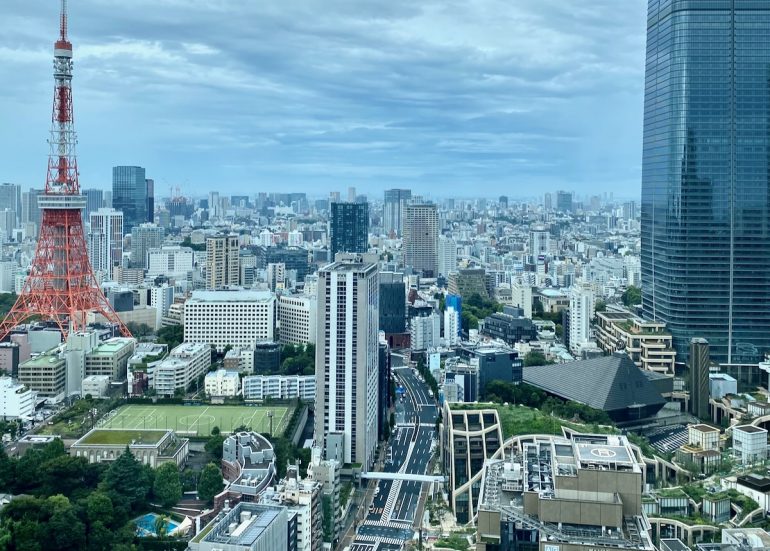 But first, Tokyo! When we initially visited the city in 2005, getting around was a challenge. Addresses aren’t linear, and iPhones didn’t exist, so you had to ask your concierge to print out directions from some database, which you then handed to a taxi driver or attempted to use on your own. Now, Google Maps and GPS make navigating so easy; directions even include which subway station exit to use. And while most everyone we encountered in Tokyo spoke enough English for us to get by, the Google Translate app proved invaluable for reading signs and menus. (More on that in the Hokkaido post….)
But first, Tokyo! When we initially visited the city in 2005, getting around was a challenge. Addresses aren’t linear, and iPhones didn’t exist, so you had to ask your concierge to print out directions from some database, which you then handed to a taxi driver or attempted to use on your own. Now, Google Maps and GPS make navigating so easy; directions even include which subway station exit to use. And while most everyone we encountered in Tokyo spoke enough English for us to get by, the Google Translate app proved invaluable for reading signs and menus. (More on that in the Hokkaido post….)
 If you’ve never been to Tokyo, you may have visions of Blade Runner or Lost in Translation, and there are moments like that. Most of the architecture, however, is neither historical nor new, despite the above photo, but somewhere in between, and not especially attractive. This is not one of those cities—Paris, Venice, etc.—where you walk around marveling at the beauty.
If you’ve never been to Tokyo, you may have visions of Blade Runner or Lost in Translation, and there are moments like that. Most of the architecture, however, is neither historical nor new, despite the above photo, but somewhere in between, and not especially attractive. This is not one of those cities—Paris, Venice, etc.—where you walk around marveling at the beauty.
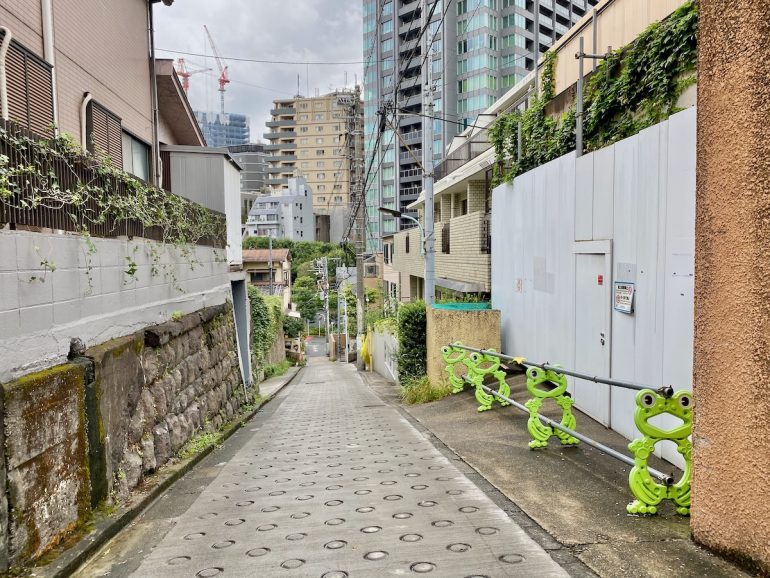 Instead, the appeal comes from it being so utterly its own distinct place—for instance, there are vending machines everywhere. And the people are lovely across the board. And the city is impossibly clean. You will not even see a dirty car.
Instead, the appeal comes from it being so utterly its own distinct place—for instance, there are vending machines everywhere. And the people are lovely across the board. And the city is impossibly clean. You will not even see a dirty car.
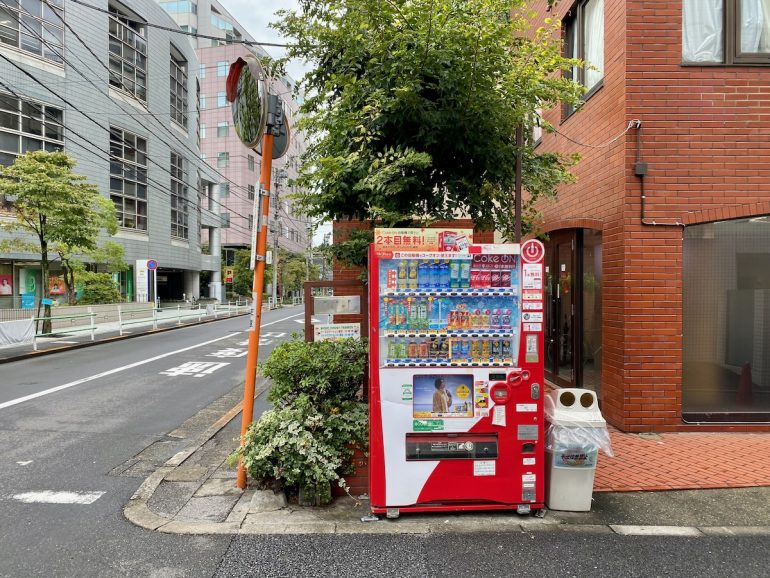 Some of the pleasures were consistent with previous trips—such as noting little innovations that make life better. Take this construction site: the digital display, which my camera couldn’t capture, shows real-time measurements of noise and vibration. I would’ve loved that when I lived in New York City.
Some of the pleasures were consistent with previous trips—such as noting little innovations that make life better. Take this construction site: the digital display, which my camera couldn’t capture, shows real-time measurements of noise and vibration. I would’ve loved that when I lived in New York City.
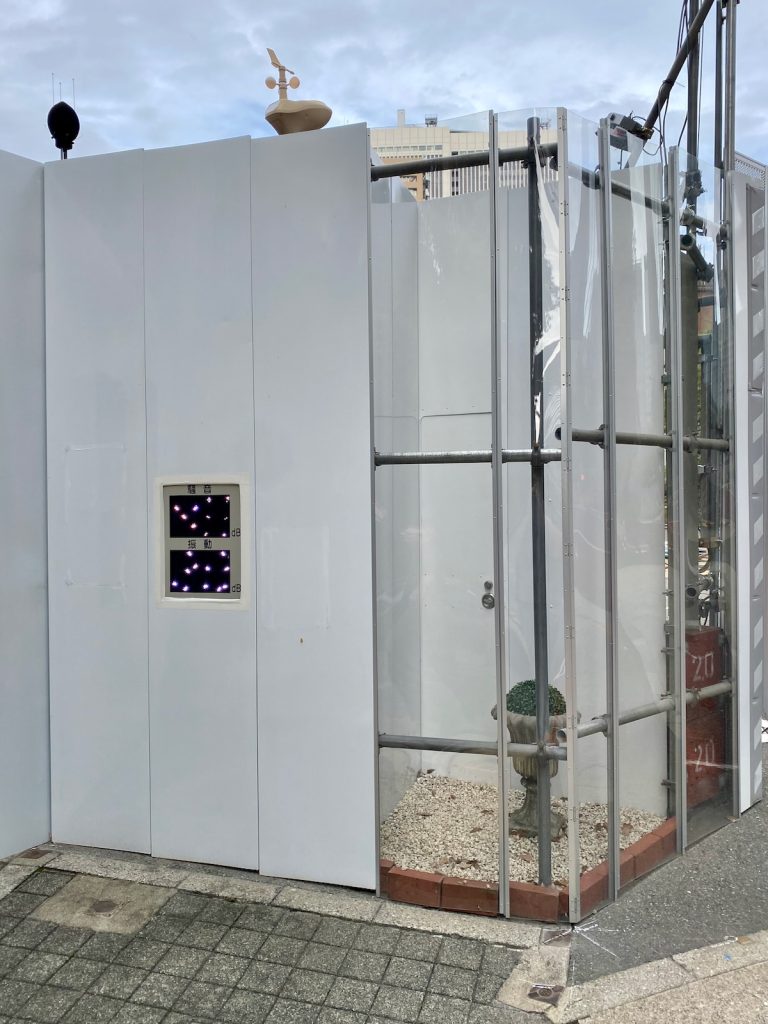 Talk of innovation segues nicely to Japanese toilets, which are far more prevalent in the U.S. than they were decades ago. Unfortunately for those of us who wear progressive lenses, the control panels tend not to be at eye level. On this model, I learned, you don’t stop the excitement by pressing the “rear” button again. Instead, that makes the spray pulse. (Hello!) Other innovations at public restrooms that struck me as thoughtful: a kid’s seat inside a men’s room stall and umbrella hooks next to urinals.
Talk of innovation segues nicely to Japanese toilets, which are far more prevalent in the U.S. than they were decades ago. Unfortunately for those of us who wear progressive lenses, the control panels tend not to be at eye level. On this model, I learned, you don’t stop the excitement by pressing the “rear” button again. Instead, that makes the spray pulse. (Hello!) Other innovations at public restrooms that struck me as thoughtful: a kid’s seat inside a men’s room stall and umbrella hooks next to urinals.
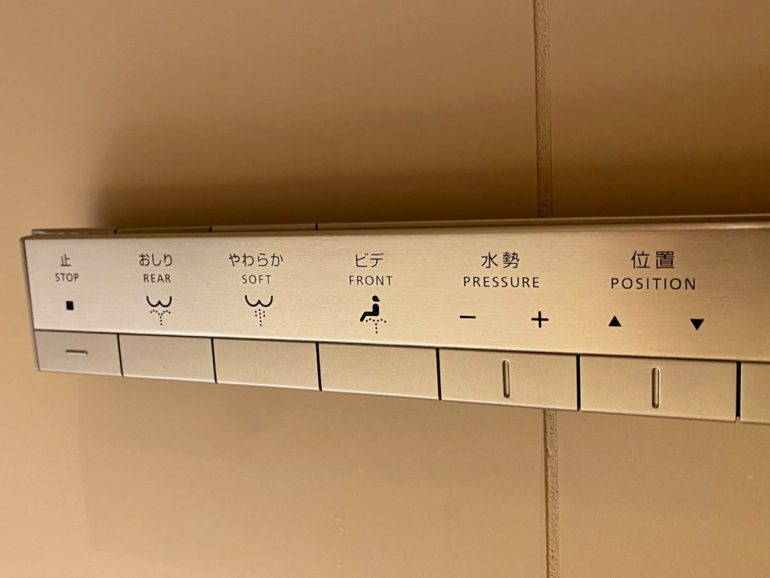
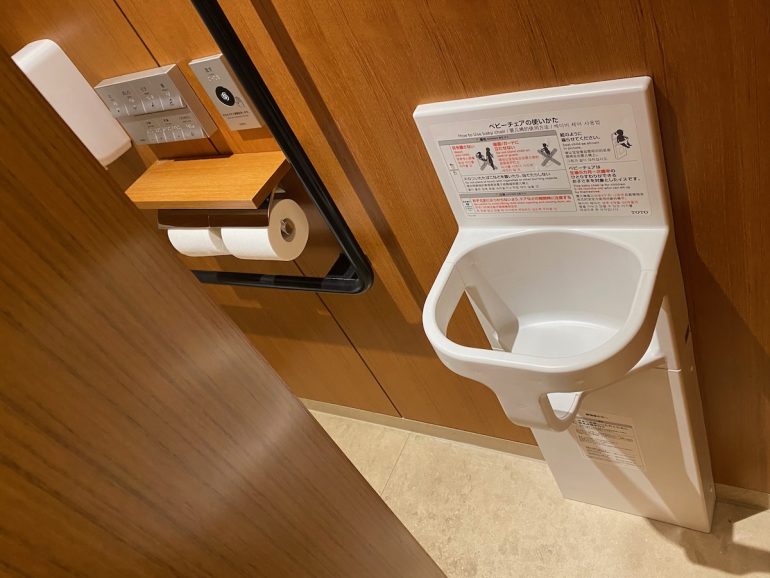
If you know me at all, you know that I love a good warning sign. The collision one is very Robert Longo.
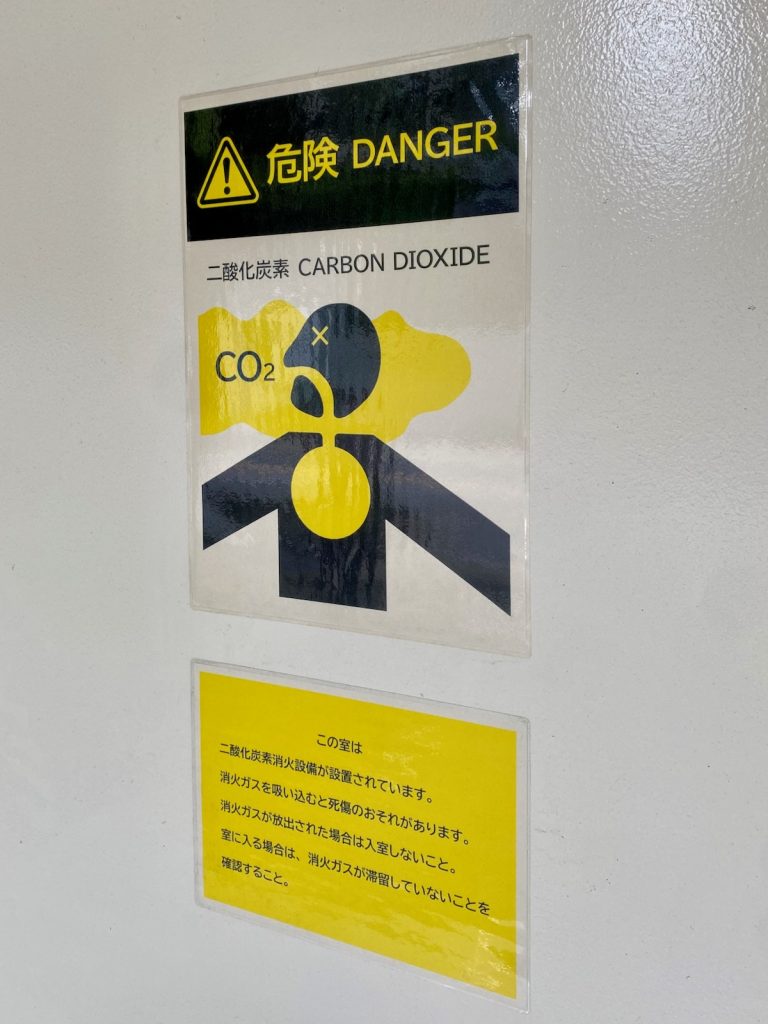
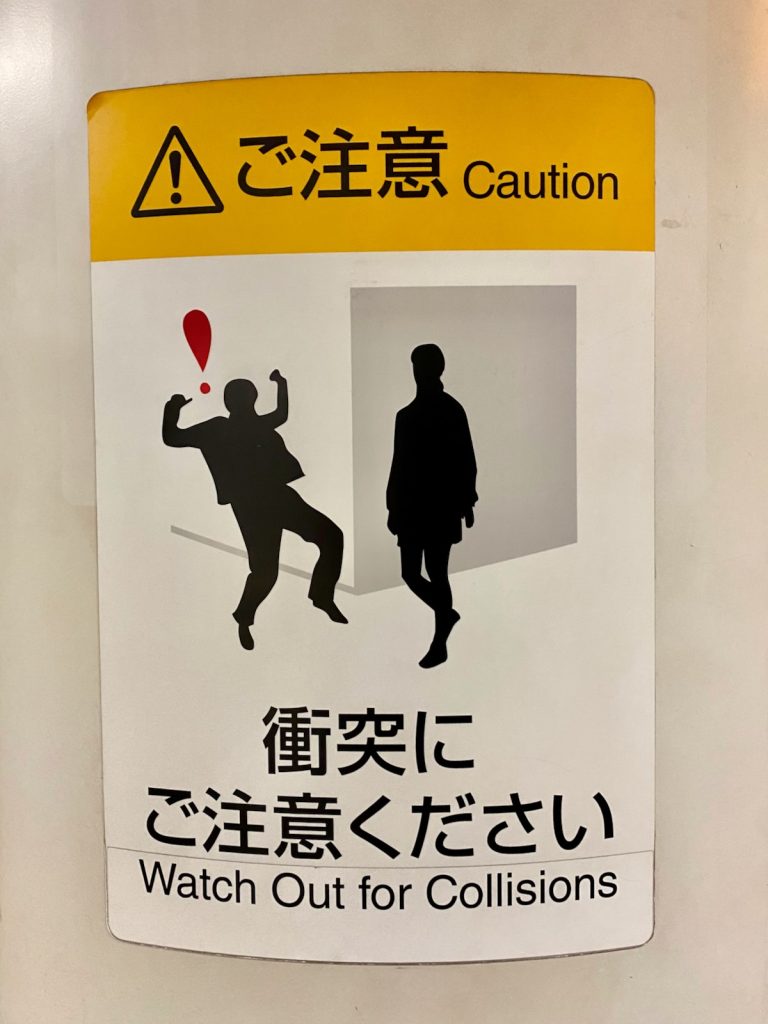
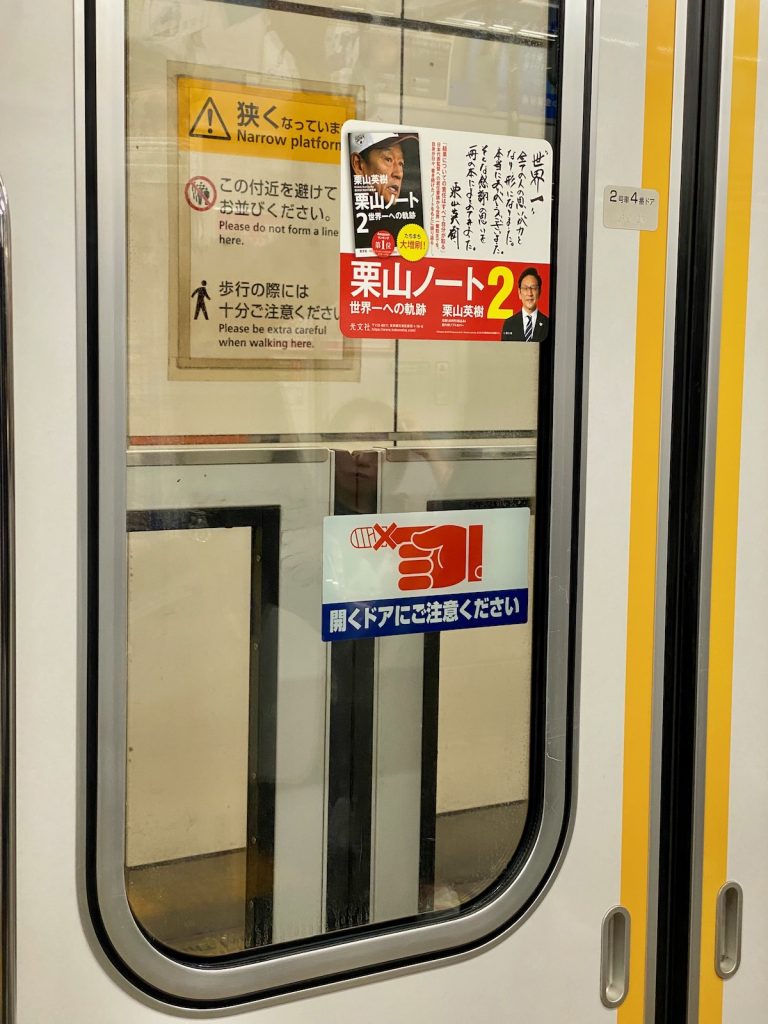 And for word people, the translations are reliably entertaining.
And for word people, the translations are reliably entertaining.
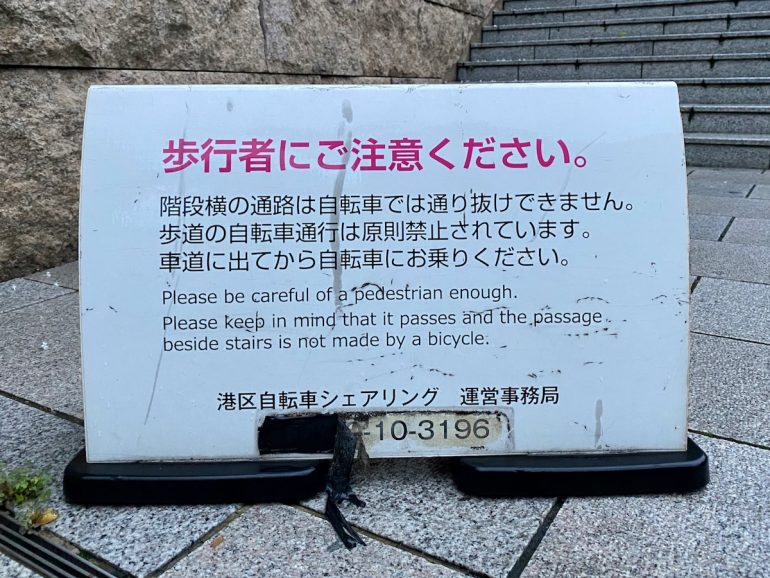
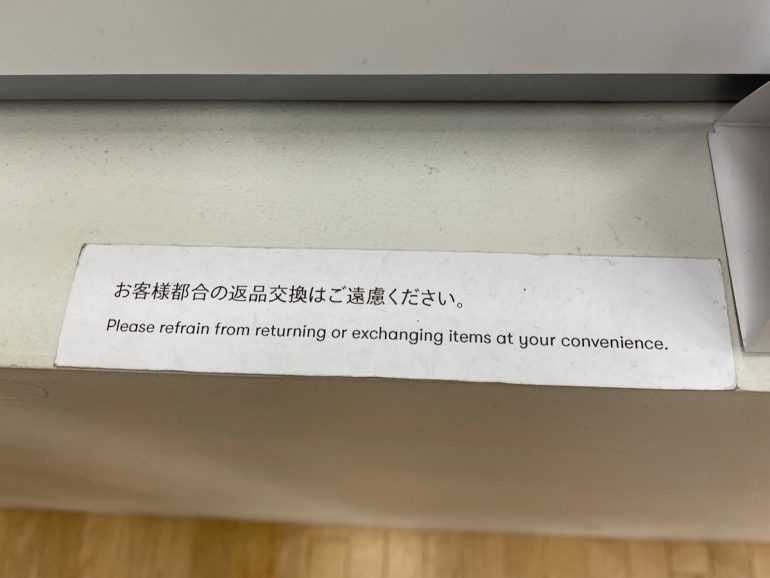
I was disappointed to see that the old taxi sedans are being replaced. At least the new ones still have a cute lighted globe on top.
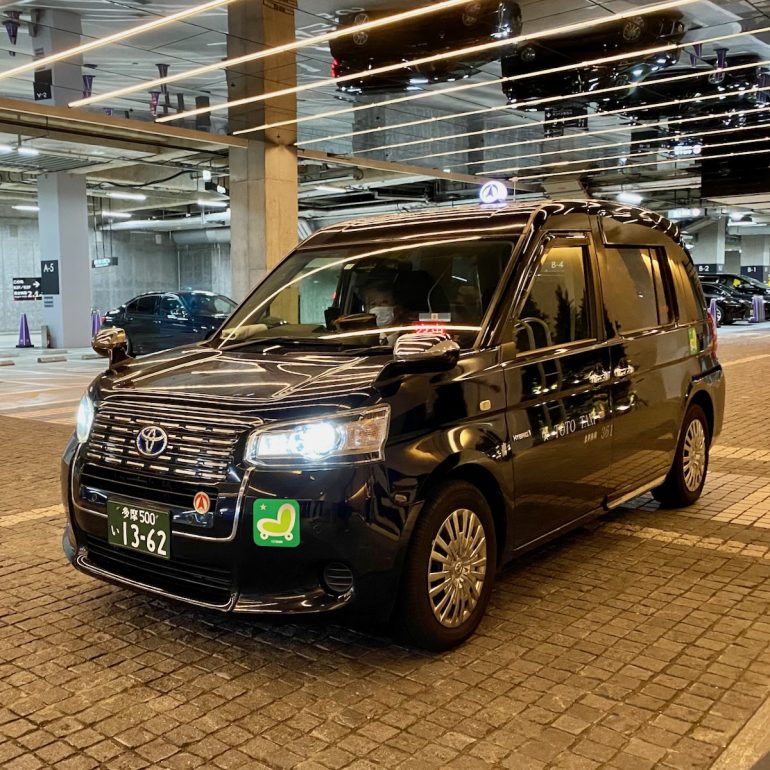
Based on friends’ recommendation, we stayed at the Tokyo Edition Toranomon, on the upper floors of the skyscraper pictured below. The Edition brand is Marriott’s partnership with legendary hotelier Ian Schrager, and while the 31st-floor lobby tries too hard to be cool—loud music and office plants everywhere, positioned so that they tickle the head of anyone who sits down—the views were amazing, including from the restaurant where breakfast is served.
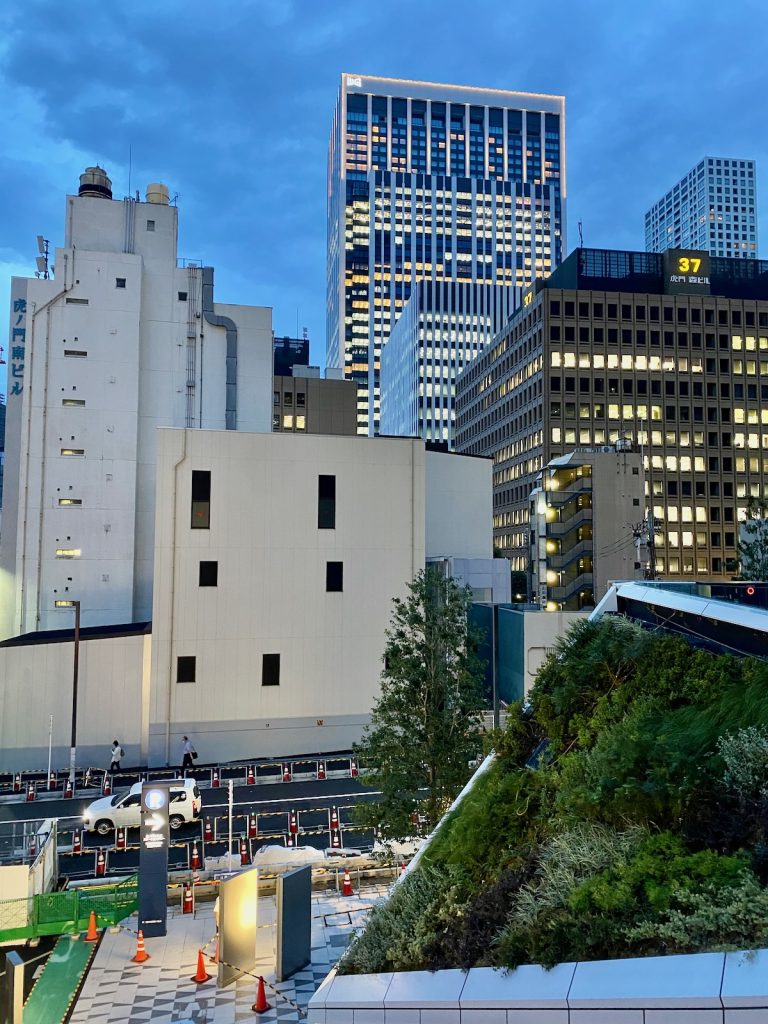
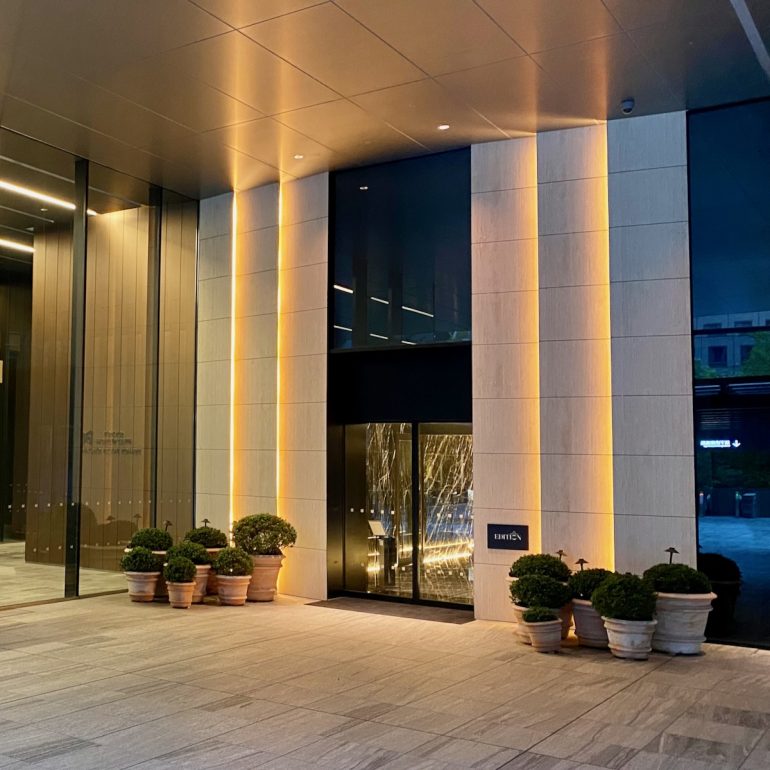

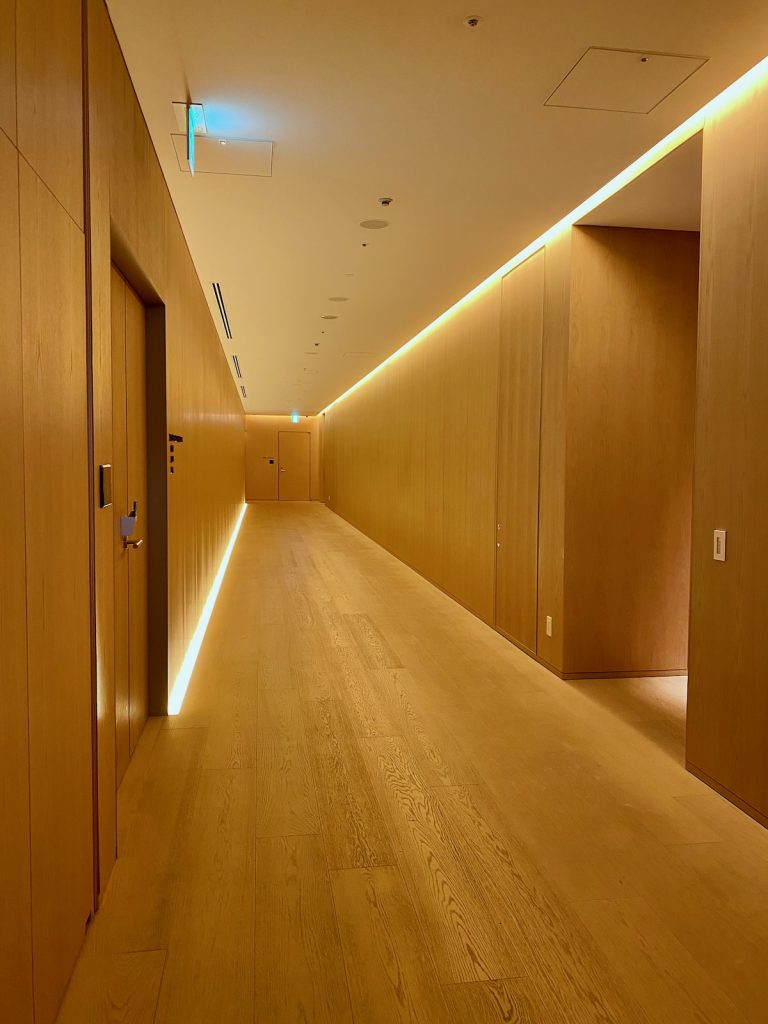
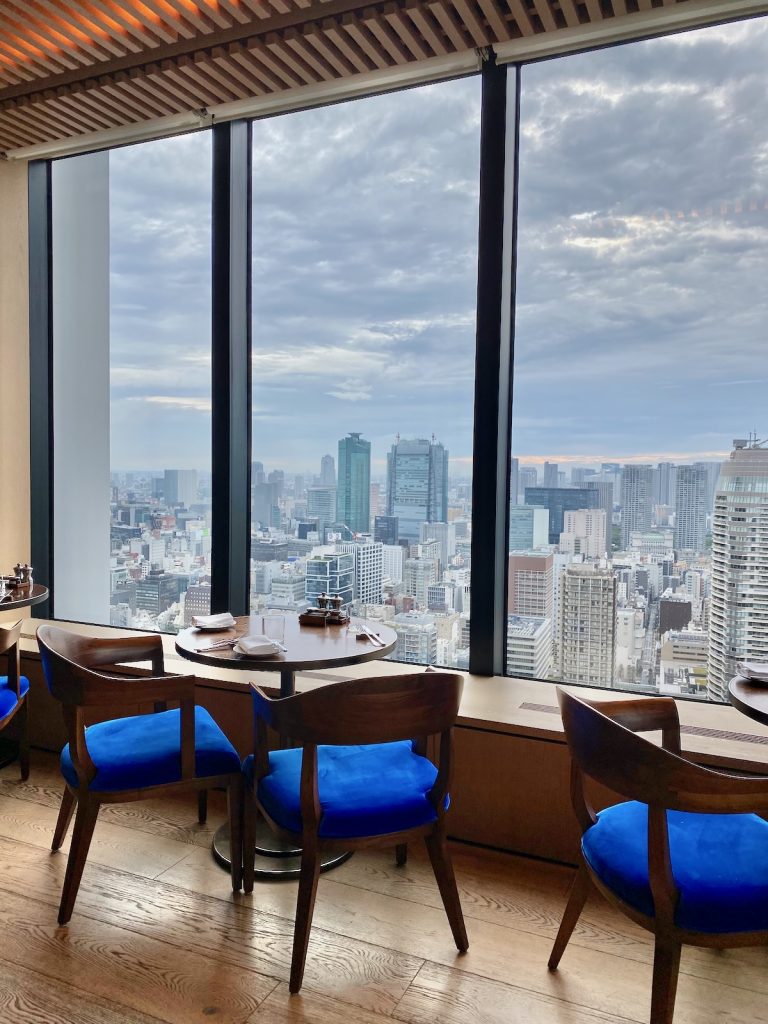 And our room hit the spot. We booked a suite, because I tend to get up earlier to work, and through a stroke of luck, the hotel put us at the end of the hallway, so no one ever walked by—and even if they did, the bedroom was far from the door. I like that in any hotel, but even more when faced with brutal jet lag. (Tokyo is 16 hours ahead of us.) That said, minimalism requires constant upkeep, and while the hotel currently benefits from its newness—it opened in the fall of 2020—the walls may need to be painted as often as Disneyland, judging from the scuffs we saw. Two more quibbles: the room had one of those LEDs that’s a de facto nightlight (which I covered with a Band-Aid), and ugh, why the massive TV? Don’t people bring their own devices these days?
And our room hit the spot. We booked a suite, because I tend to get up earlier to work, and through a stroke of luck, the hotel put us at the end of the hallway, so no one ever walked by—and even if they did, the bedroom was far from the door. I like that in any hotel, but even more when faced with brutal jet lag. (Tokyo is 16 hours ahead of us.) That said, minimalism requires constant upkeep, and while the hotel currently benefits from its newness—it opened in the fall of 2020—the walls may need to be painted as often as Disneyland, judging from the scuffs we saw. Two more quibbles: the room had one of those LEDs that’s a de facto nightlight (which I covered with a Band-Aid), and ugh, why the massive TV? Don’t people bring their own devices these days?
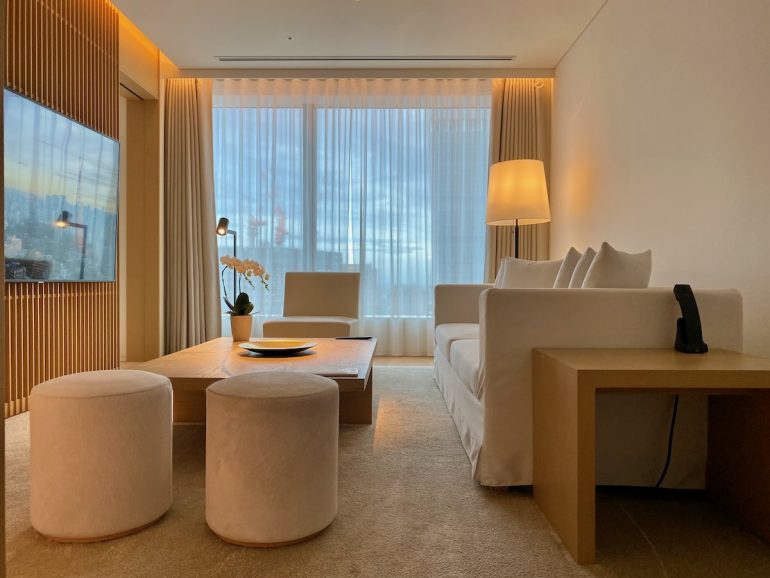
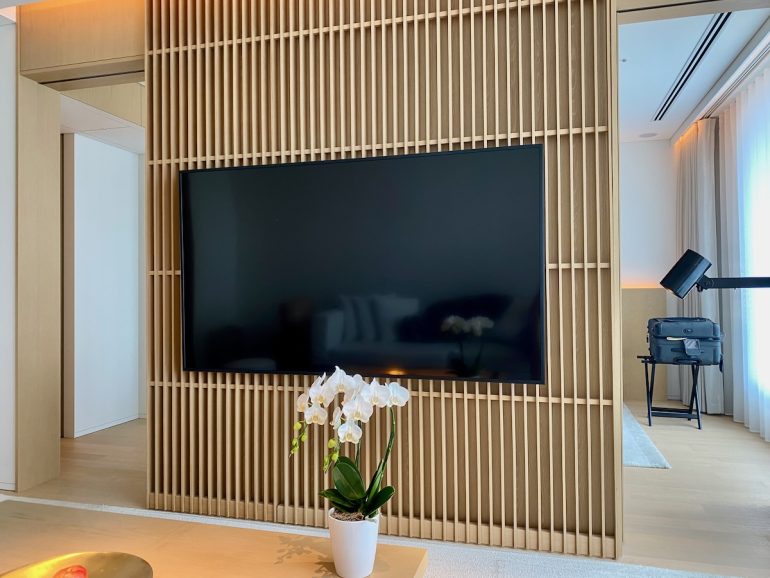
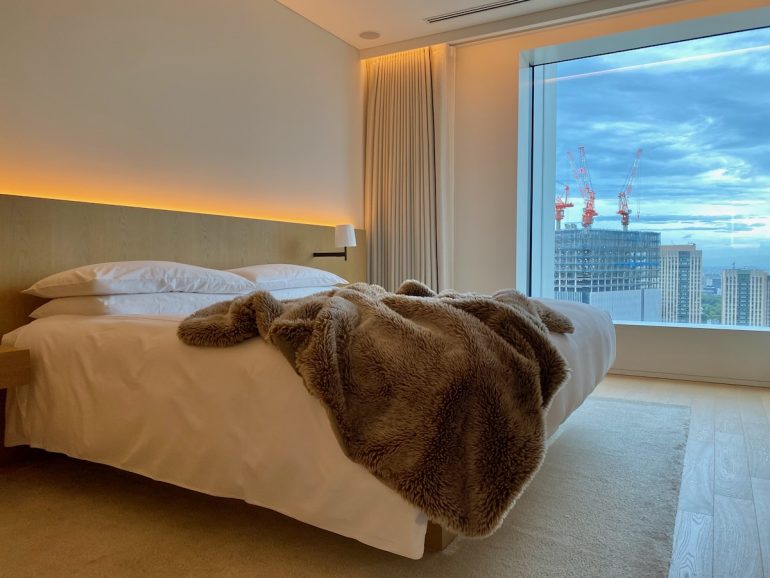 Another thing you might not know about Japan is that the country takes cocktails very seriously. Bartenders work at a level you rarely see in the U.S. For instance, for a gin and tonic at the hotel’s ground-floor Gold Bar, the bartender first stirred ice around the glass to chill it. In other ways, the bar was both silly—to read half the menu, you had to shine a black light at it—and sublime, with perfect music (obscure vintage soul, a cover of Bow Wow Wow’s “I Want Candy” that the bots in my phone couldn’t identify, and more).
Another thing you might not know about Japan is that the country takes cocktails very seriously. Bartenders work at a level you rarely see in the U.S. For instance, for a gin and tonic at the hotel’s ground-floor Gold Bar, the bartender first stirred ice around the glass to chill it. In other ways, the bar was both silly—to read half the menu, you had to shine a black light at it—and sublime, with perfect music (obscure vintage soul, a cover of Bow Wow Wow’s “I Want Candy” that the bots in my phone couldn’t identify, and more).
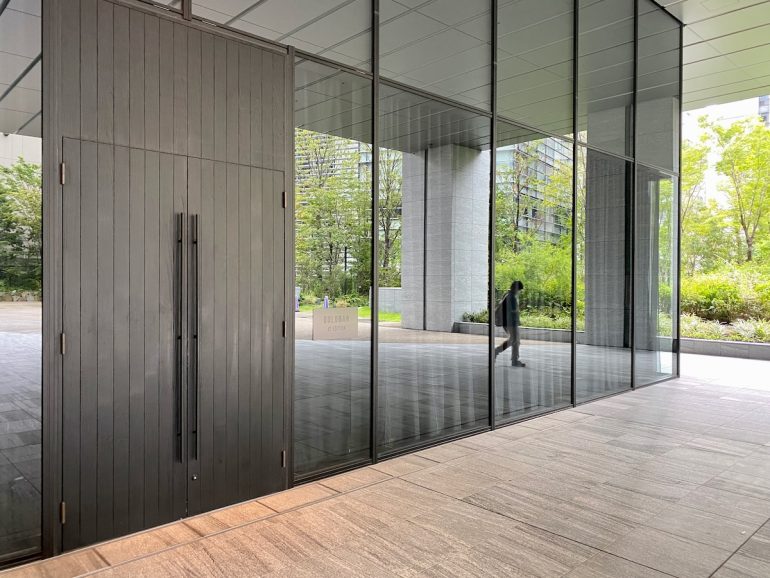
 The hotel is in Toranomon, a business neighborhood, which I’m on the fence about recommending. On one hand, it was a little sterile, and it emptied out after hours. On the other hand, quietness is not always a bad thing, and Tokyo office complexes are handsome. A definite plus: the many subway stations nearby. The Tokyo Metro is a marvel, and I strongly recommend any traveler figure it out—there are deals for foreigners—early in the trip. I love that M logo so much I ordered a T-shirt with it.
The hotel is in Toranomon, a business neighborhood, which I’m on the fence about recommending. On one hand, it was a little sterile, and it emptied out after hours. On the other hand, quietness is not always a bad thing, and Tokyo office complexes are handsome. A definite plus: the many subway stations nearby. The Tokyo Metro is a marvel, and I strongly recommend any traveler figure it out—there are deals for foreigners—early in the trip. I love that M logo so much I ordered a T-shirt with it.
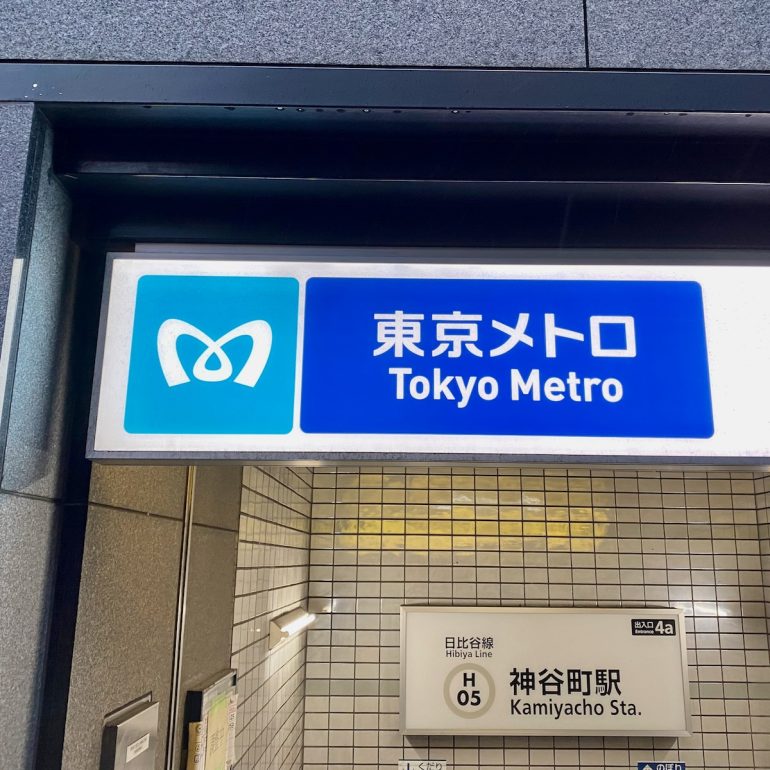
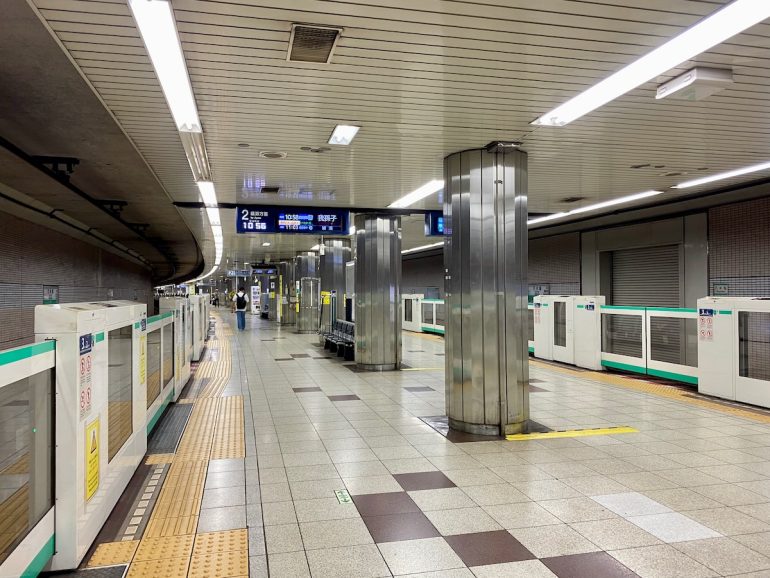
 Tokyo is hot and humid in summer, and summer lasts longer; the weather was still oppressive at the end of September. In an effort to conserve energy, Japan takes a different view of air-conditioning than we do. The “moderately air-conditioned” subway car mentioned in the photo below is the coldest option.
Tokyo is hot and humid in summer, and summer lasts longer; the weather was still oppressive at the end of September. In an effort to conserve energy, Japan takes a different view of air-conditioning than we do. The “moderately air-conditioned” subway car mentioned in the photo below is the coldest option.
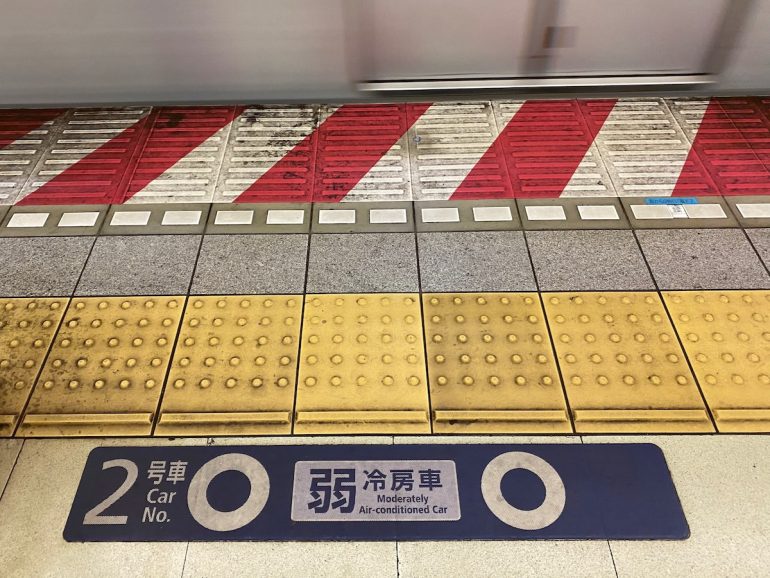 Because we had been to Tokyo before, and had done some of the main attractions, we did even less planning than usual. (We couldn’t always agree on what we had done on past trips. I’m convinced that we went to a “ninja house,” but Adam has no recollection of it.) I’m content to just walk, but the weather forced us to two museums. That’s never my first choice—I’m a little over contemporary art these days, and museums are basically the same everywhere in the world—but I rolled with it. The first one was the National Art Center. I loved the 2007 building by Kisho Kurokawa, but I found the main exhibit (selections from the Tate Britian around the theme of “light”) to be incohesive. Plus it was crowded and warm.
Because we had been to Tokyo before, and had done some of the main attractions, we did even less planning than usual. (We couldn’t always agree on what we had done on past trips. I’m convinced that we went to a “ninja house,” but Adam has no recollection of it.) I’m content to just walk, but the weather forced us to two museums. That’s never my first choice—I’m a little over contemporary art these days, and museums are basically the same everywhere in the world—but I rolled with it. The first one was the National Art Center. I loved the 2007 building by Kisho Kurokawa, but I found the main exhibit (selections from the Tate Britian around the theme of “light”) to be incohesive. Plus it was crowded and warm.
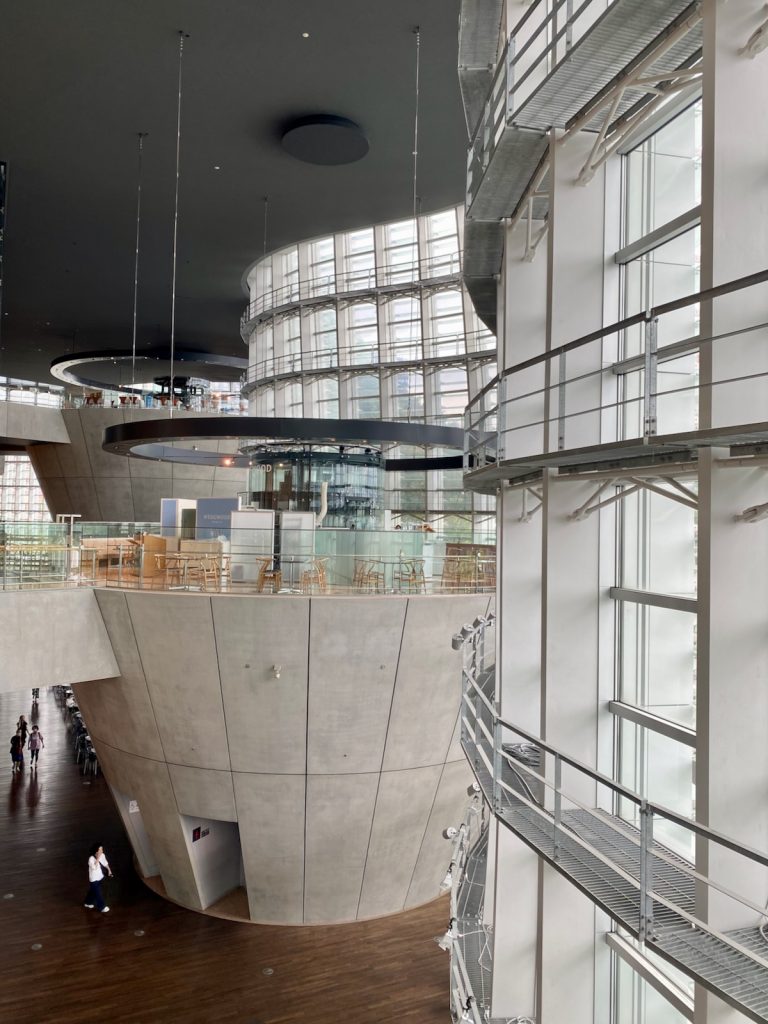 The separate building to check your umbrella—with a dryer outside—is very Japan.
The separate building to check your umbrella—with a dryer outside—is very Japan.
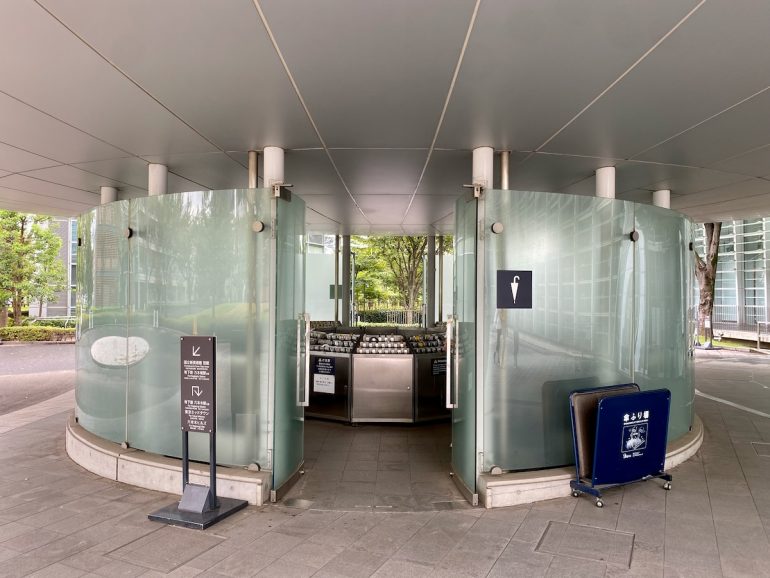 The second museum was the Museum of Contemporary Art Tokyo. The building was also impressive, if less showy, and the David Hockney retrospective was reliably engaging. Blankets were provided at the entrance for those who couldn’t bear the temperature (70 degrees Fahrenheit) of the galleries.
The second museum was the Museum of Contemporary Art Tokyo. The building was also impressive, if less showy, and the David Hockney retrospective was reliably engaging. Blankets were provided at the entrance for those who couldn’t bear the temperature (70 degrees Fahrenheit) of the galleries.

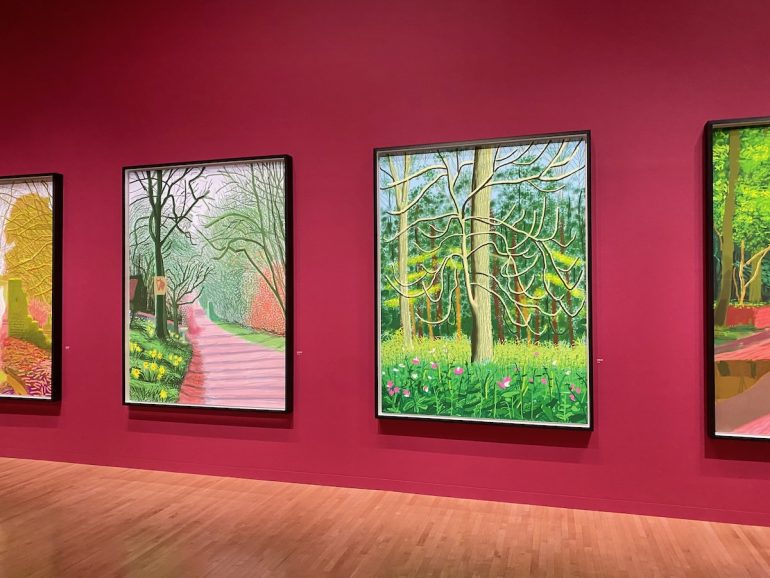 Otherwise we walked and walked. We found a stylish stationery/design shop called Think of Things; we accidentally wandered into the Shibuya scramble crossing on a weekend (bad idea); we had a coffee at a cool little café called Cream of the Crop; we stopped at a supermarket so I could check out the pickles and potato chip flavors; and we justified a stop at Blue Bottle because we craved a good espresso—Japan is more into pour-over coffee—and we were rewarded with a quality pug sighting.
Otherwise we walked and walked. We found a stylish stationery/design shop called Think of Things; we accidentally wandered into the Shibuya scramble crossing on a weekend (bad idea); we had a coffee at a cool little café called Cream of the Crop; we stopped at a supermarket so I could check out the pickles and potato chip flavors; and we justified a stop at Blue Bottle because we craved a good espresso—Japan is more into pour-over coffee—and we were rewarded with a quality pug sighting.
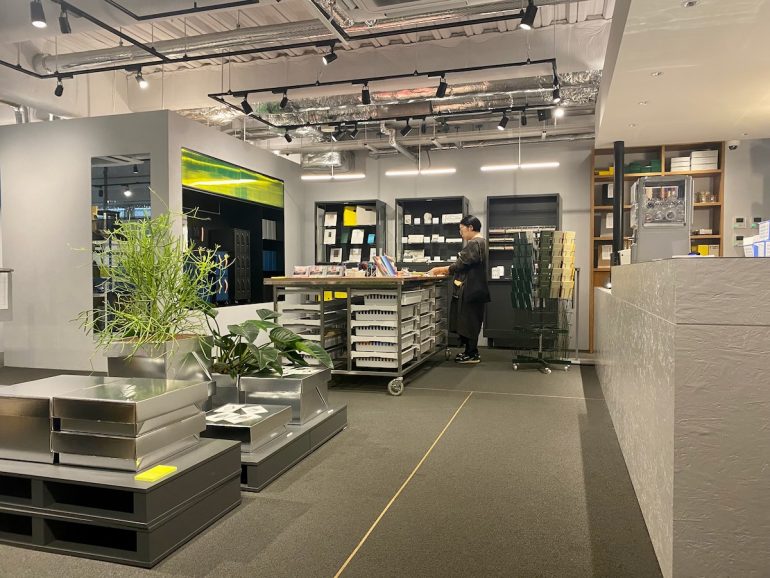
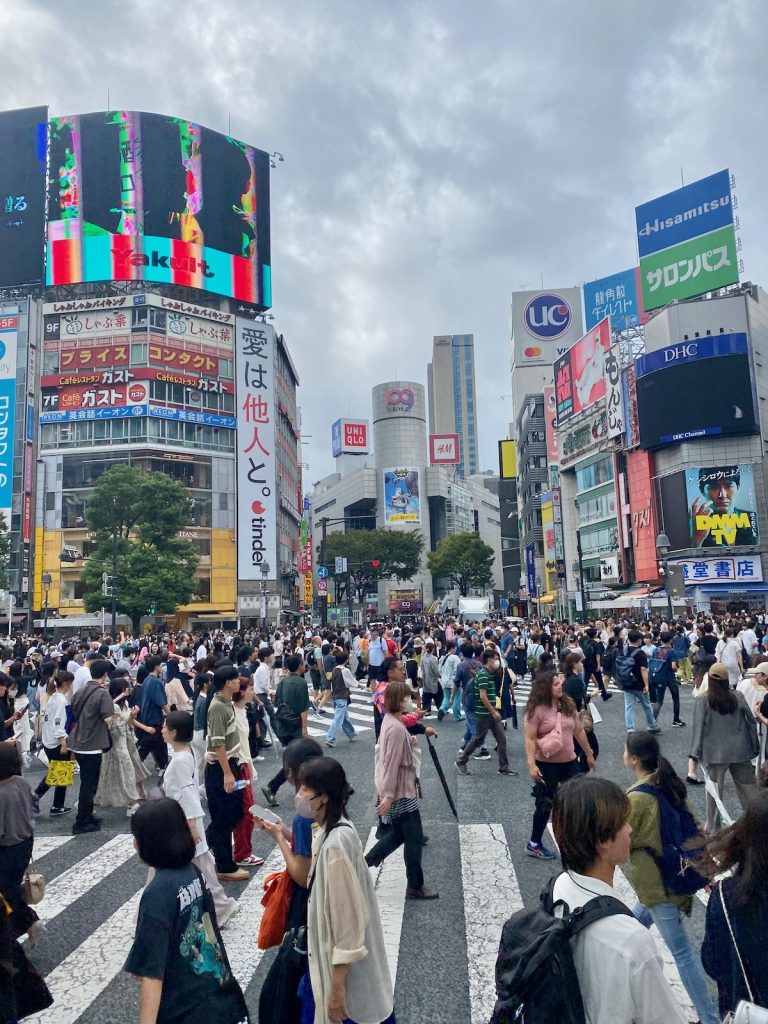
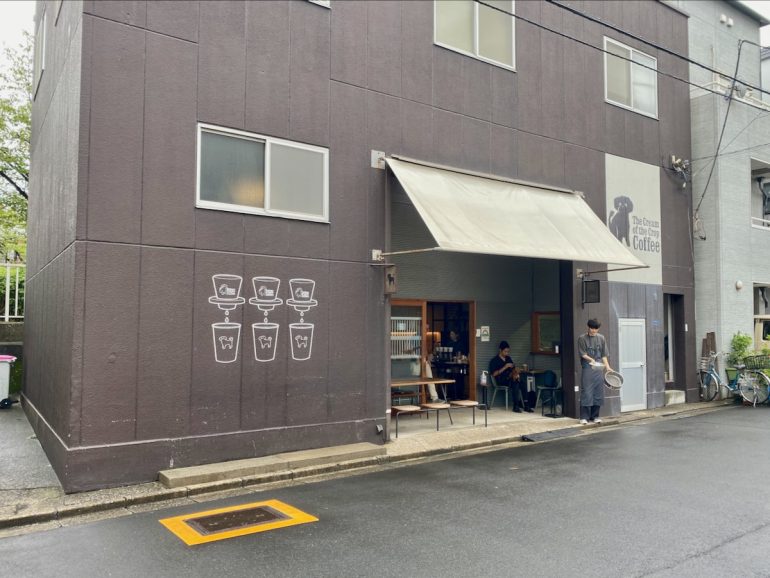
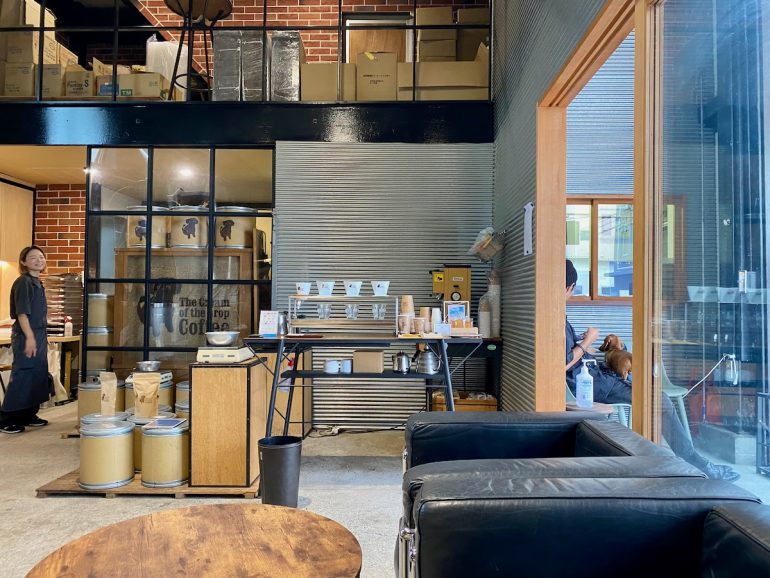
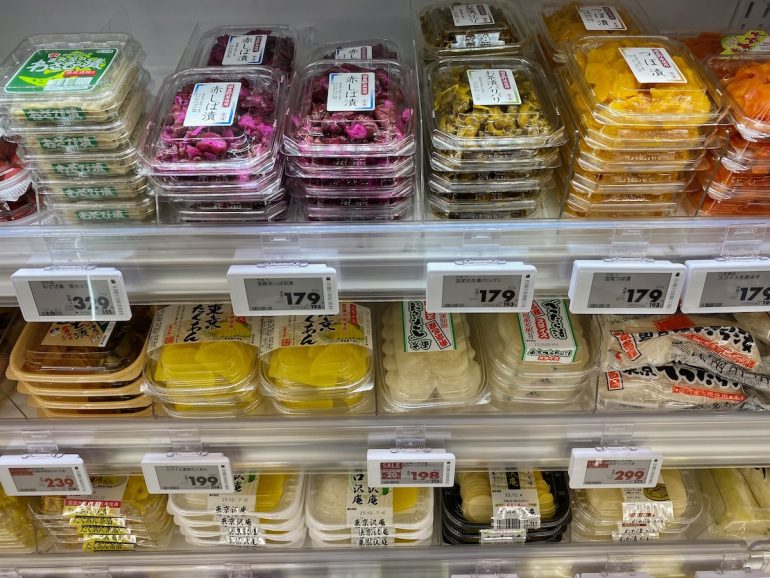
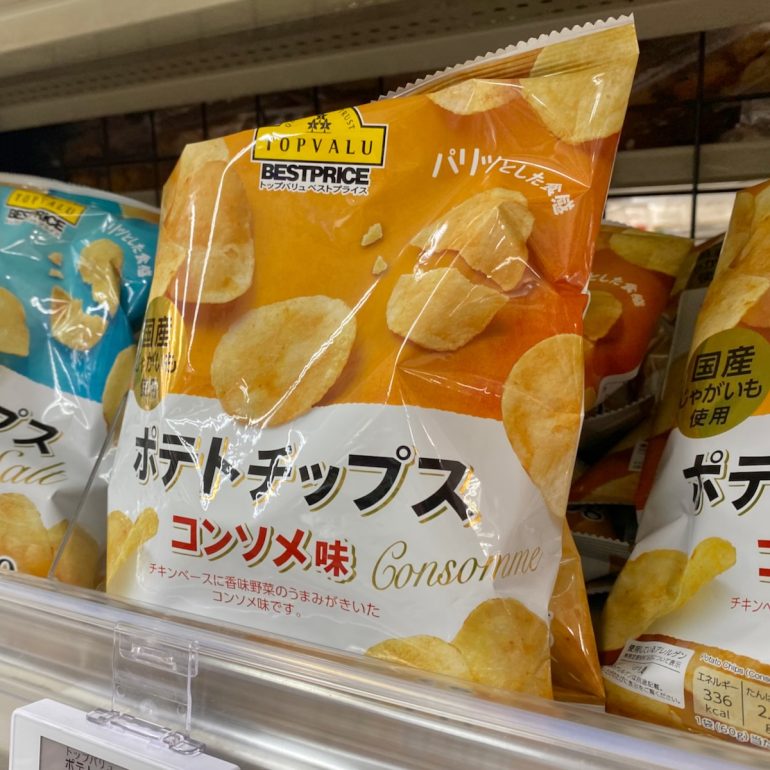
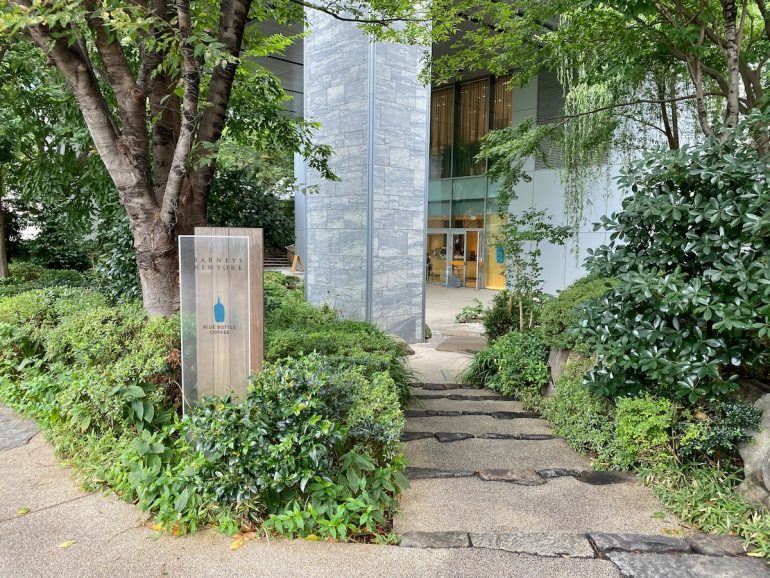

We walked so much that I pushed a stubbed toe too far—it looked like a mulberry—and I had to go looking for athletic tape. Enlarge the photo to comprehend the enormity of the task.
 And we ate. One day, we landed at Chamise Shinkichi, a restaurant that specializes—i.e., it has one item on the menu—in soba made with matcha. In the dish to the left is a raw egg, which we were instructed to crack into the hot rice.
And we ate. One day, we landed at Chamise Shinkichi, a restaurant that specializes—i.e., it has one item on the menu—in soba made with matcha. In the dish to the left is a raw egg, which we were instructed to crack into the hot rice.
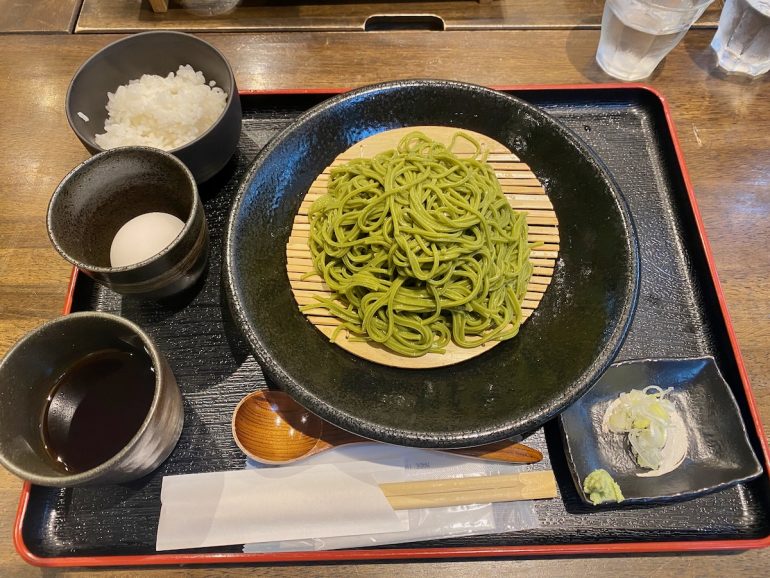 And I made sure we returned to Akomeya, a chain of gourmet food and more. We probably spent as much time browsing there as we did at the Hockney show. The outpost at La Kagu—a complex with books and fashion, although somehow we missed that part—also has a restaurant. I love a set menu when I’m in Japan. You get to try more, including dishes you probably wouldn’t order.
And I made sure we returned to Akomeya, a chain of gourmet food and more. We probably spent as much time browsing there as we did at the Hockney show. The outpost at La Kagu—a complex with books and fashion, although somehow we missed that part—also has a restaurant. I love a set menu when I’m in Japan. You get to try more, including dishes you probably wouldn’t order.
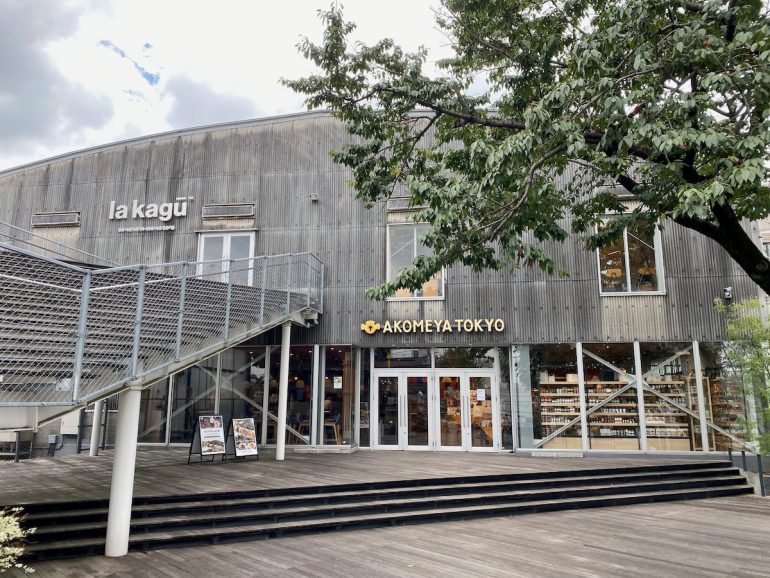
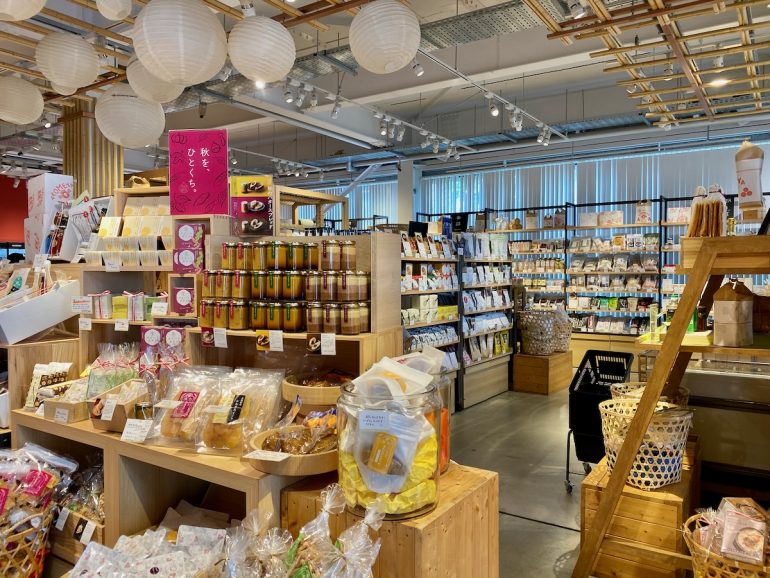
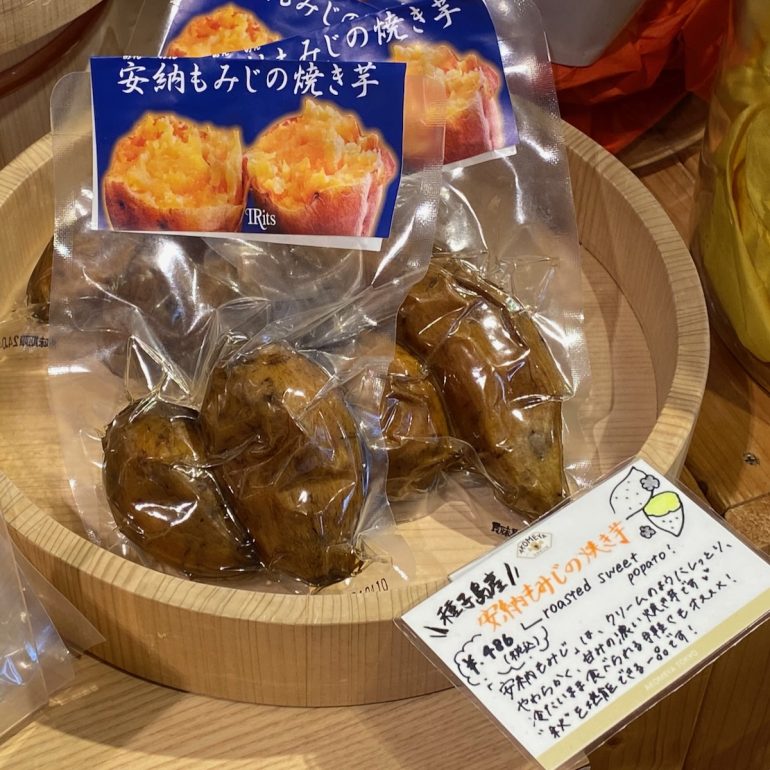
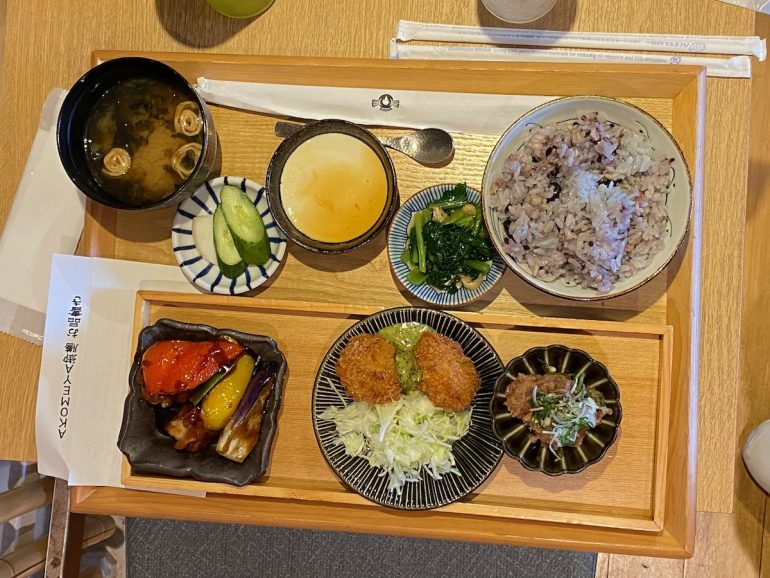 Our best meal in Tokyo was at Tempura Miyashiro, an eight-seat counter where chef Naoki Miyashiro cooks a set menu right in front of you. Tempura at this level (the restaurant has a Michelin star) is a world away from what you get here, and the meal does venture beyond fried food.
Our best meal in Tokyo was at Tempura Miyashiro, an eight-seat counter where chef Naoki Miyashiro cooks a set menu right in front of you. Tempura at this level (the restaurant has a Michelin star) is a world away from what you get here, and the meal does venture beyond fried food.
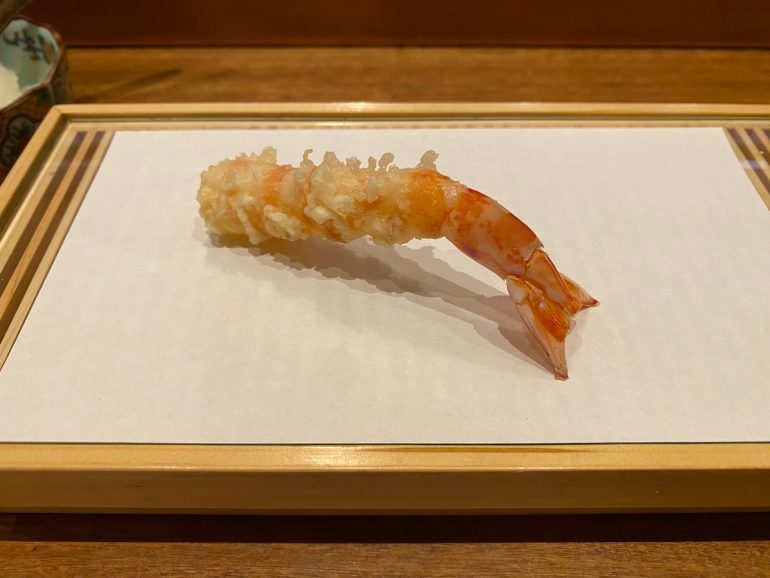
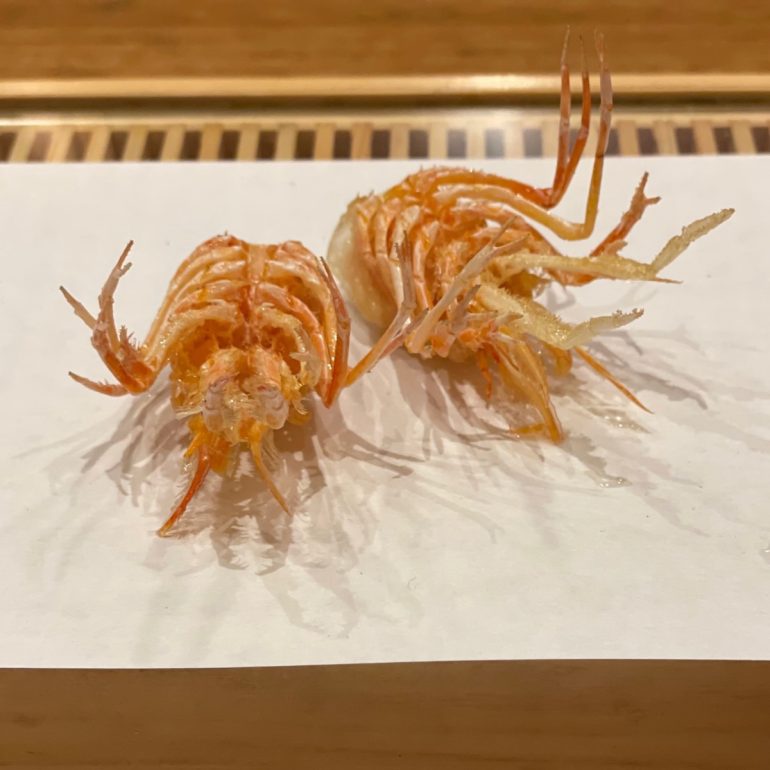
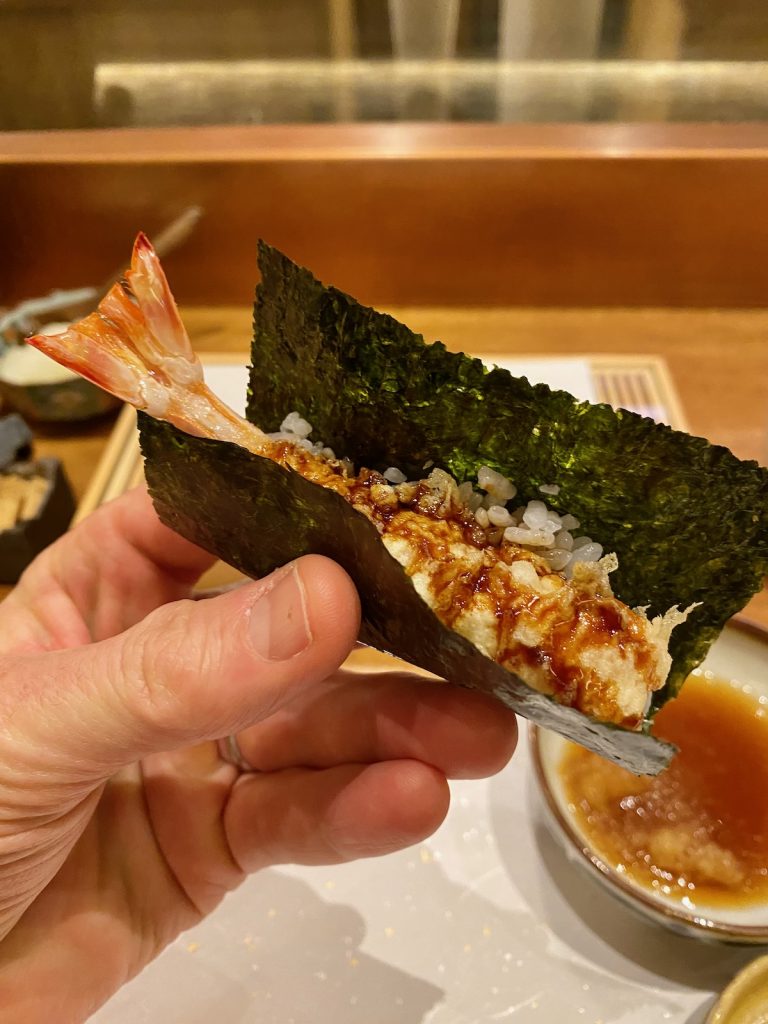
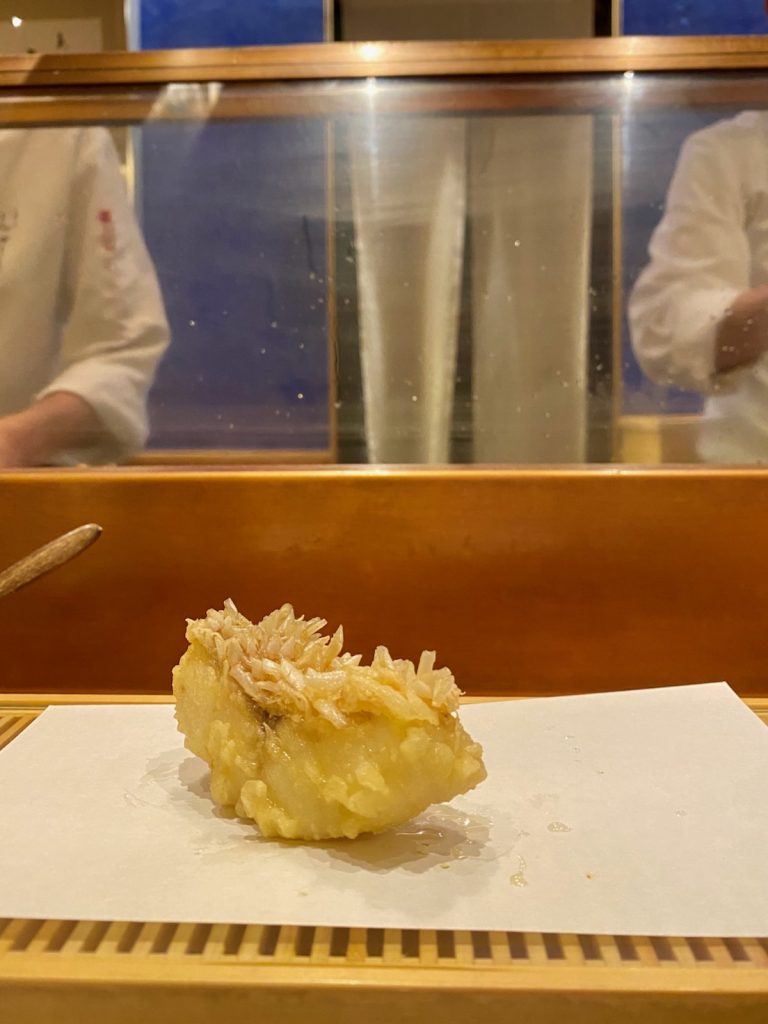
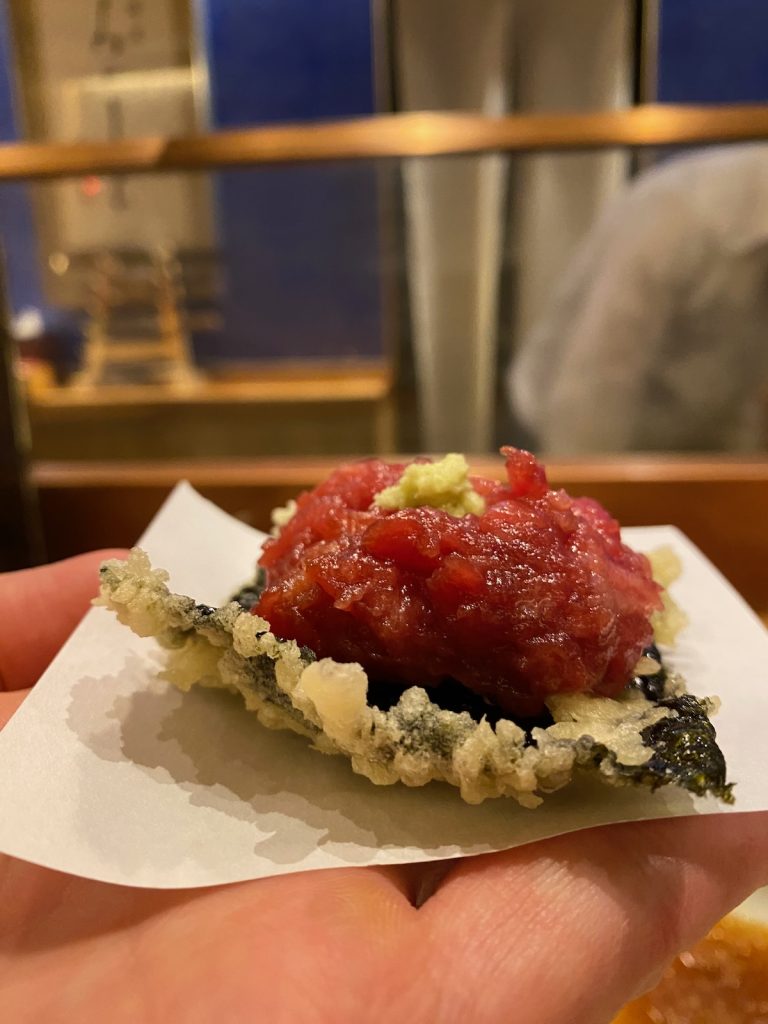 The area around the restaurant was pretty cool—with a lot of bars and restaurants, including ones under the train tracks—but we were so stuffed we had to retire. Saving it for the next trip! And I think we might try the Okura Tokyo, spitting distance from the Edition. We went for a drink at the bar and fell in love with the lobby. People were outraged when the fabulous old Okura was demolished in 2015, which was indeed a shame, but at least the new version is worthy in its own way.
The area around the restaurant was pretty cool—with a lot of bars and restaurants, including ones under the train tracks—but we were so stuffed we had to retire. Saving it for the next trip! And I think we might try the Okura Tokyo, spitting distance from the Edition. We went for a drink at the bar and fell in love with the lobby. People were outraged when the fabulous old Okura was demolished in 2015, which was indeed a shame, but at least the new version is worthy in its own way.
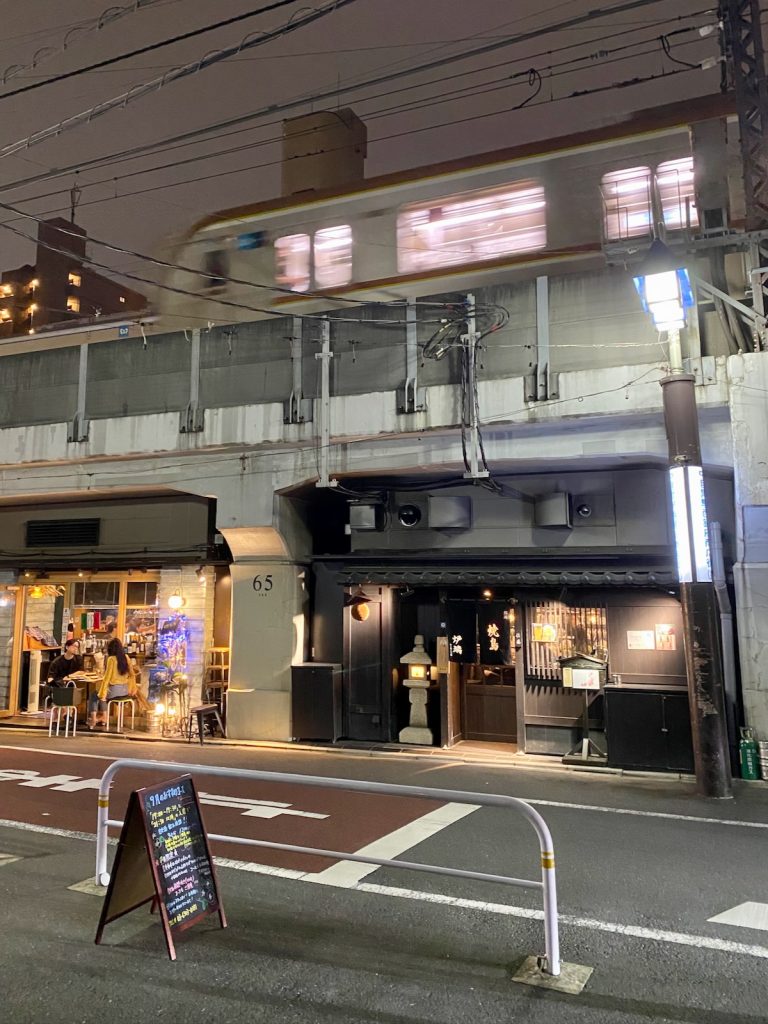
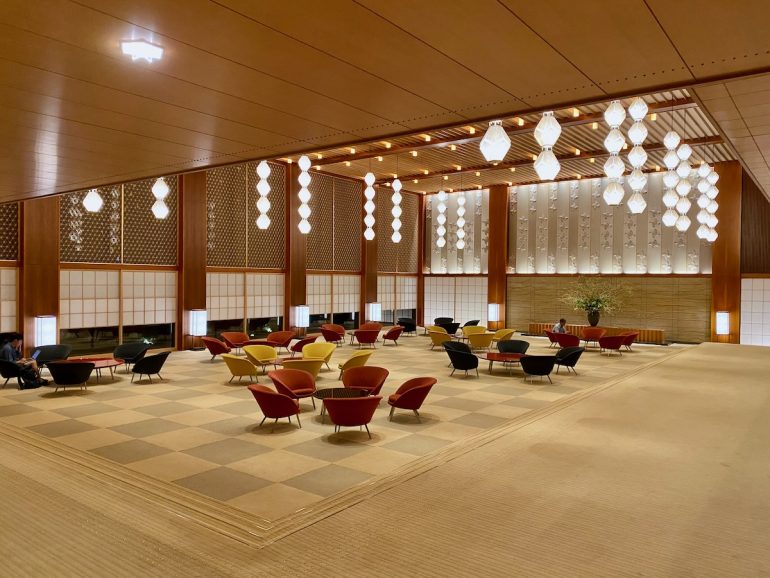
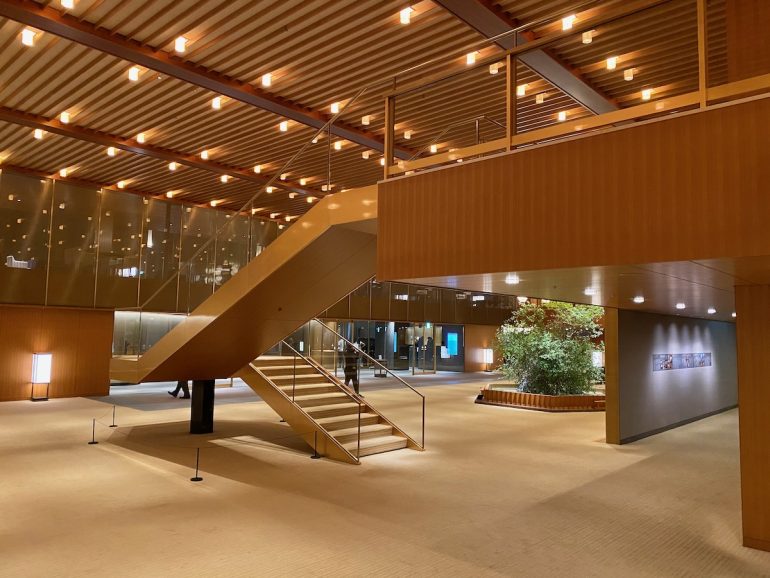 That’s it for Tokyo. Next up: Hokkaido, via a flight from Haneda—where they loan slippers to anyone who has to remove shoes for the security check. And people who swallow Wi-Fi routers get special seating!
That’s it for Tokyo. Next up: Hokkaido, via a flight from Haneda—where they loan slippers to anyone who has to remove shoes for the security check. And people who swallow Wi-Fi routers get special seating!
Previous travel coverage:
••• Paso Robles, Pinnacles National Park, and Beyond
••• A Review of the Inn at Mattei’s Tavern
••• Another quickie in L.A.
••• Sitting Pretty at the One & Only Mandarina
••• The Mysteries of Istanbul
••• Palm Springs: Midweek at the Oasis
••• A Summer Swing Through the Northeast
↓↓↓ Why Is Everyone Going to Portugal?
••• Patagonia Made Easy
••• A Quickie in L.A.
••• From Penthouse to Pavement in Mexico City
••• Do Greek Islands Live Up to the Fantasy?
••• Splendid Isolation at Utah’s Lodge at Blue Sky
••• Three Reasons to Visit Paso Robles Now
••• The Rebirth of the Cuyama Buckhorn
Sign up for the Siteline email newsletter and you’ll never miss a post.


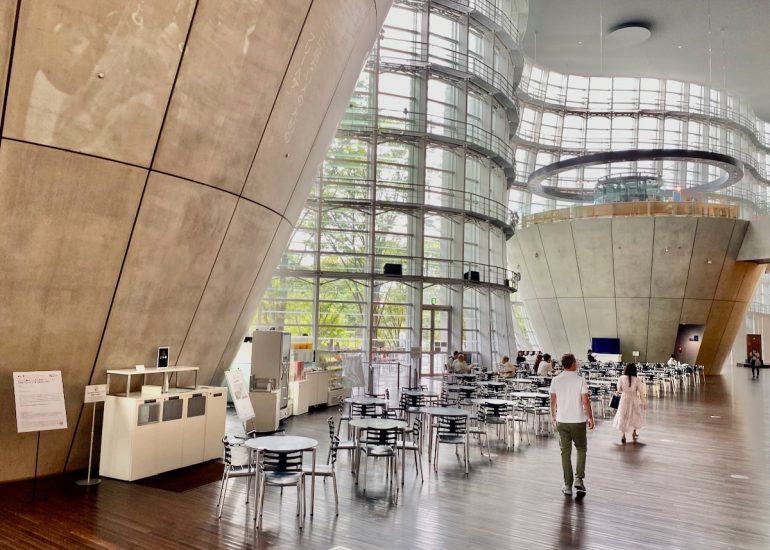
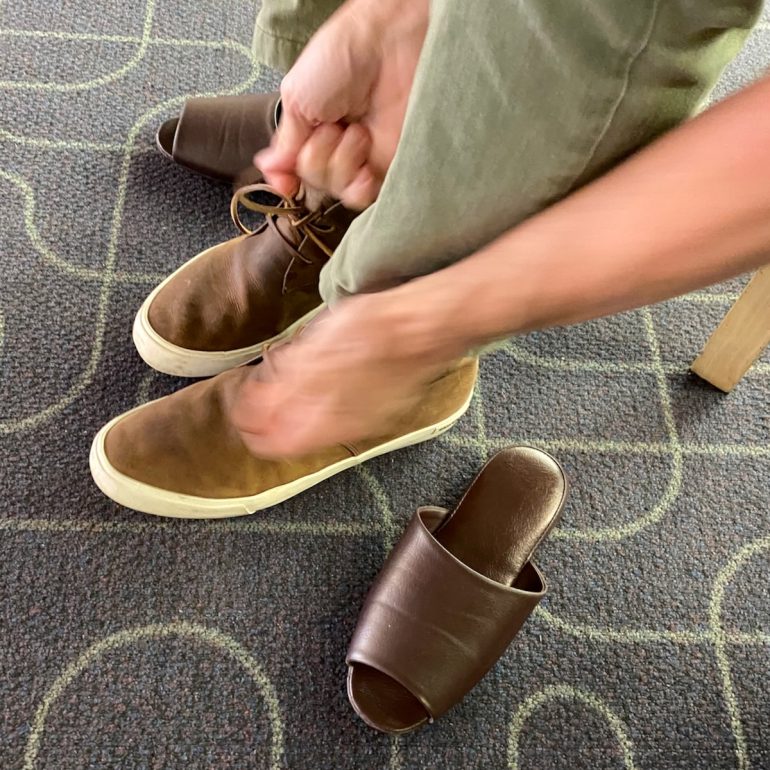






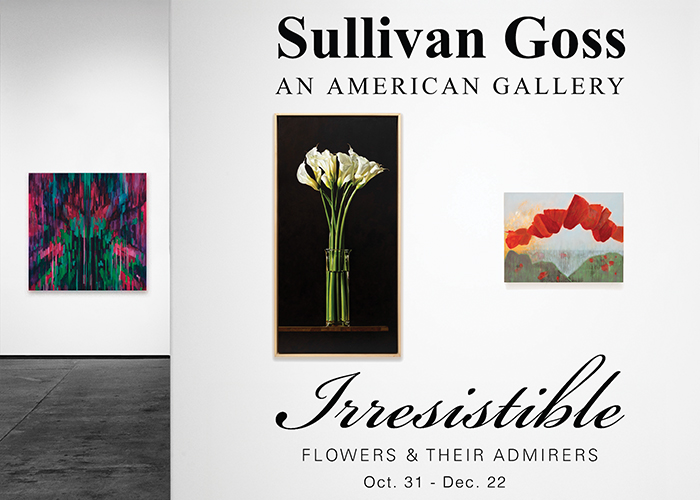


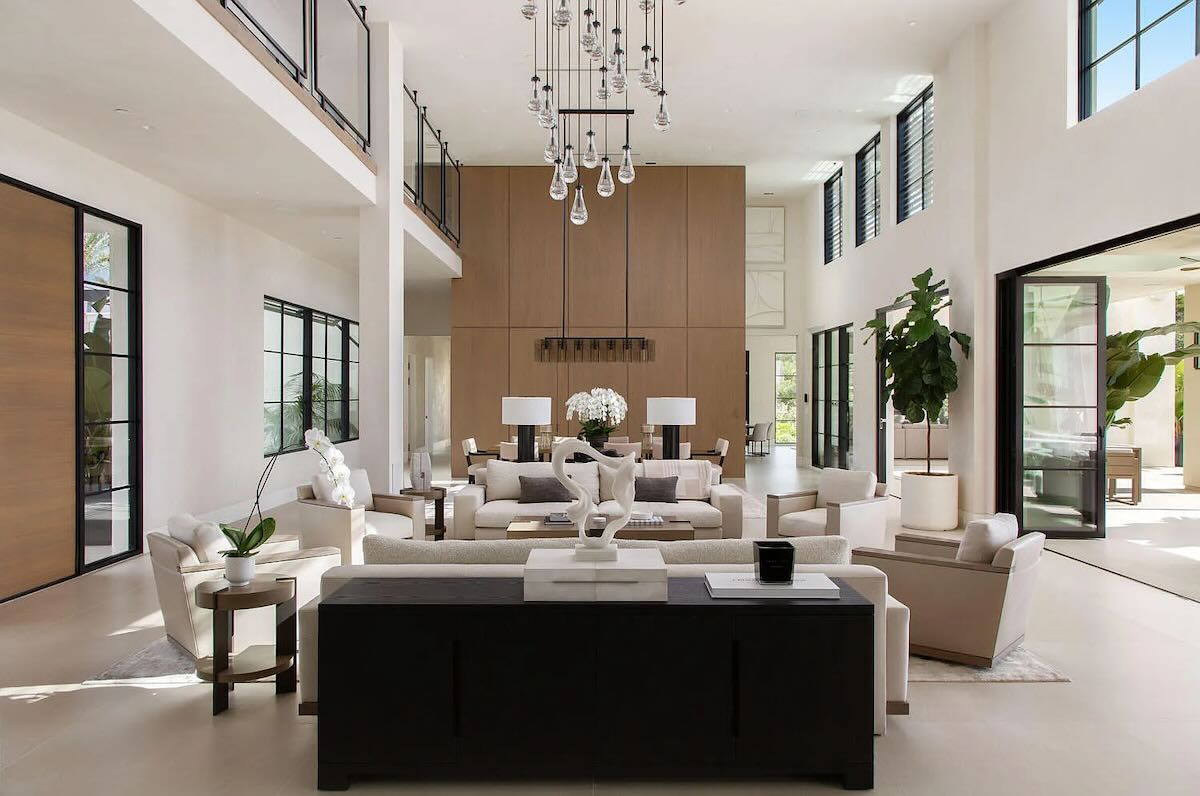



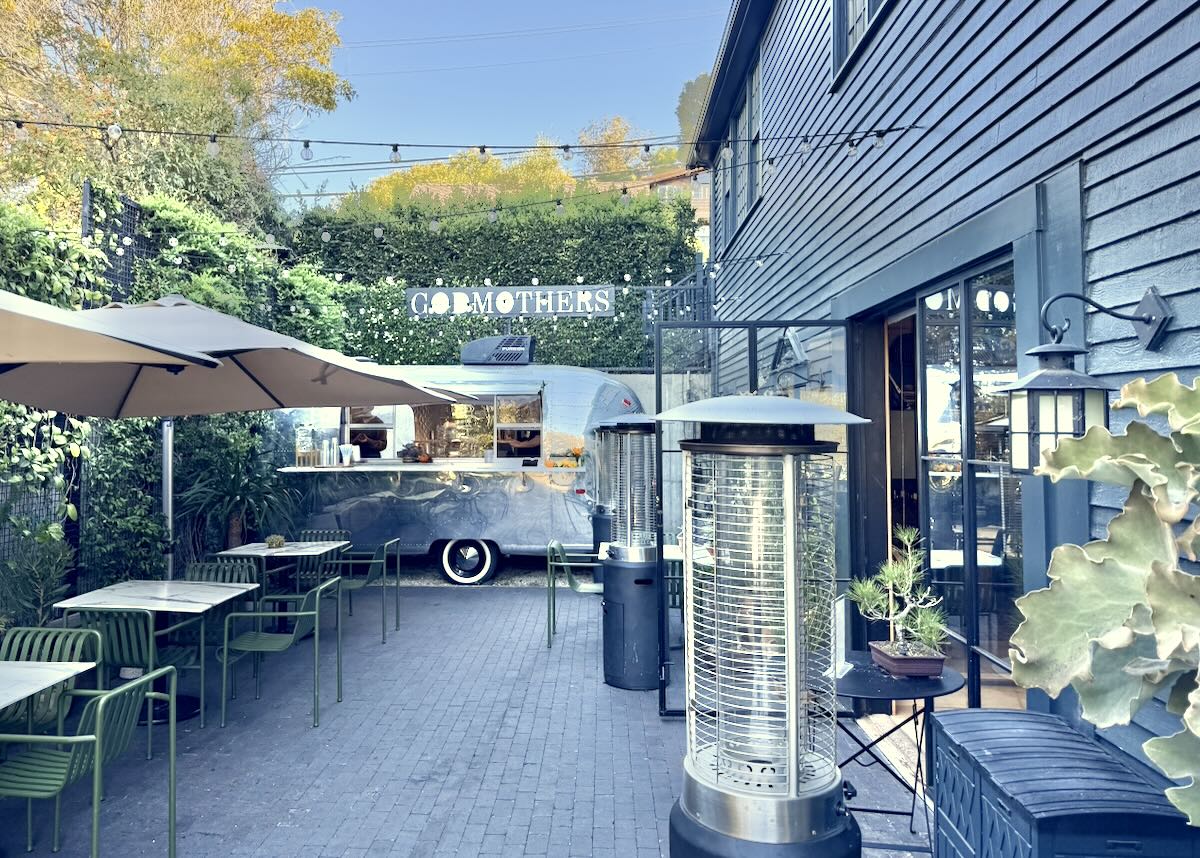
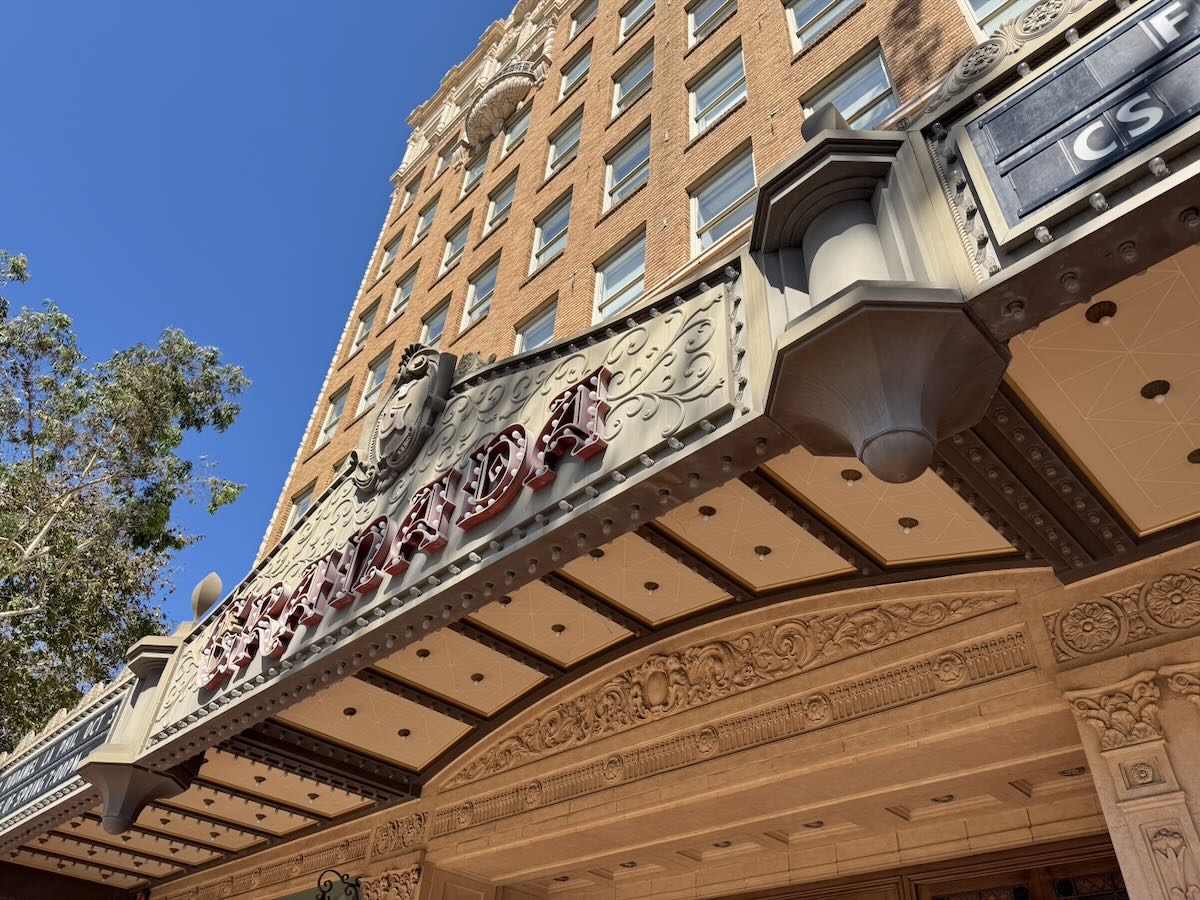

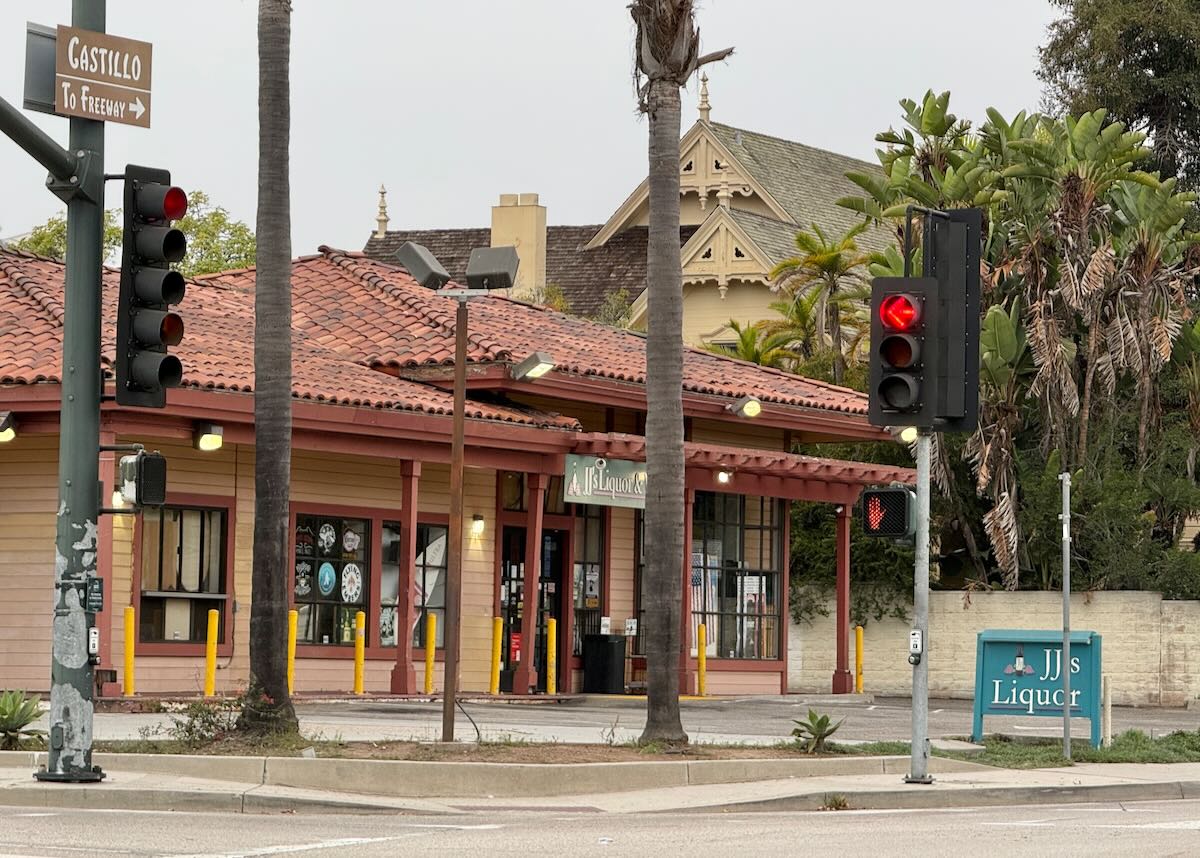

Recent Comments
Does the Après Ski party include a lift ticket? — Heidi Smith
Bravo, Music Academy of the West! — Deborah David
Santa Barbara Museum of Art gift shop has moved upstairs. Still a great place to shop with lots of Impressionist merchandise to match the GREAT… — LG
This is the box outside of Ca’ Dario at the corner of Anacapa and Victoria. — Mike
Renaming the post office and spending $500 k to do it. Is another great example tax payers money being wasted. — Dan Kolodziejski
Hallelujah! The return of that Southbound on-ramp is long overdue — Tammy
You've done a great thing for the hapless men of Santa Barbara with this series. Stopping by half of these stores. — Andy
The post office renaming will cost roughly $500,000 paid for by the USPS internal funds from stamps and fees. — Derek
Thank you, Erik, for reminding your readers to support local businesses; it is one of the critical ways to help our communities thrive. (I laughed… — Pat
I agree about the skimpy wine pour. However, we loved the shared entrees (chicken and salmon) with their special rice. Yes there were leftovers but… — ElizabethW